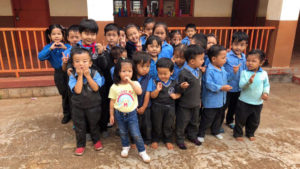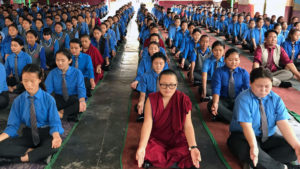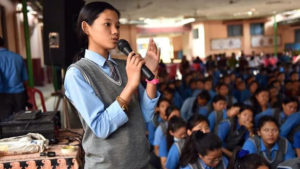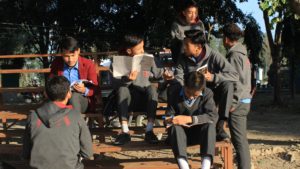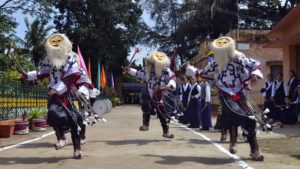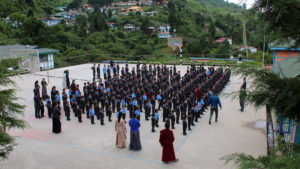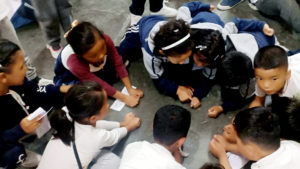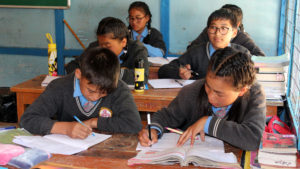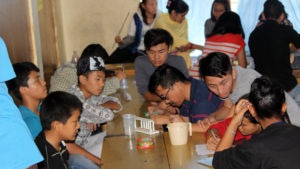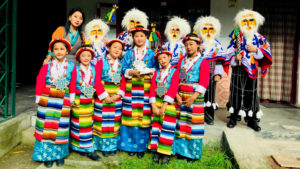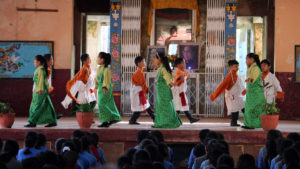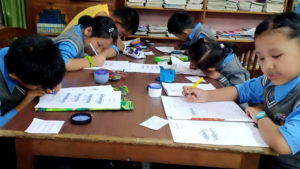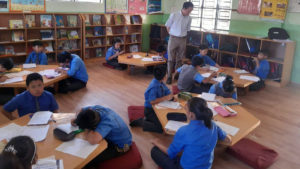
བཙན་བྱོལ་བོད་མིའི་གཞི་རིམ་གྱི་ཤེས་ཡོན་སྲིད་བྱུས།
Basic Education Policy for Tibetans in Exile
PREFACE
This Preface was written for Basic Education Policy for Tibetans in Exile, the foundational education policy… read more
CHAPTER I: INTRODUCTION
Article 17 (2) of the Charter of Tibetans in Exile, under Directive Principles states: “Towards enhancing… read more
CHAPTER II: THE MEANING OF EDUCATION
Education is to be recognised as a human quality that enables understanding of external objects and… read more
CHAPTER III: THE PURPOSE OF EDUCATION
The general purpose of education is to awaken and develop the human qualities of wisdom,… read more
CHAPTER IV: SOURCES OF LEARNING
The principal sources of the traditional Tibetan education are the traditions of Yungdrung Bon and Buddhadharma… read more
CHAPTER V: THE AIM OF GIVING EDUCATION
Students must be enabled to fully awaken their discriminative faculty of mind to be able to… read more
CHAPTER VI: SYSTEM OF EDUCATION
A system of education having traditional Tibetan education as its core and modern education as its essential… read more
CHAPTER VII: THE STRUCTURE OF BASIC EDUCATION
Education is a life-long process to be pursued and practised by persons of all ages. Of… read more… read more
CHAPTER VIII: SUBJECTS OF STUDY
Tibetan Language: The studies of language and grammar being the basis of, and gateway to, any… read more
CHAPTER IX: SYLLABI & DURATION
Curricula and syllabi for all classes up to Class XII shall be prepared in the order… read more
CHAPTER X: EXAMINATIONS
The present system of evaluation by means of a two or three hour examination shall be… read more
CHAPTER XI: TEACHERS
The future of any society rests on the quality of education provided, and the quality of… read more
CHAPTER XII: ADMINISTRATION
All Tibetan schools in exile are required to uniformly implement the policies and directive guidelines… read more
CHAPTER XIII: RIGHT TO EDUCATION
Basic Education: All Tibetan citizens performing citizen’s duties shall have the right to basic education up… read more
CHAPTER XIV: INTERIM PROVISION
It is difficult to immediately accomplish the provision of all teaching and nonteaching personnel as… read more
CHAPTER XV: REVIEW
A committee of scholars and experts, to be appointed by the Department of Education, shall periodically… read more
This Preface was written for Basic Education Policy for Tibetans in Exile, the foundational education policy directive, a visionary new guidance and direction for the exile education policy, unanimously approved by the Tibetan parliament in exile, in September 2004.
PREFACE:
1) The Title;
As the times change so too does the meaning of terms. This is of course testimony to the fact that speech and conceptual thought do not represent their objects literally. Ever since writing and grammar developed in Tibet, the word śiksā in Sanskrit has been translated as bslab pa in Tibetan. When the term bslab pa is used as noun it is read without a pause between the two syllables. But when it is used as verb it is read with a pause between the two syllables. Apart from the difference in the way it is read out loud, there is no difference in the way the two words are spelt. This is a distinctive feature of the Tibetan language, of which the words bzaḥ ba, bzhon pa and so forth are further examples. Having translated śiksā as bslab pa (education), śiksārthi as slob ma (student), śiksita as bslab Idan (educated), śiksānta as slob pa mthaḥ (completion of education) and aśéksa as mi slob pa (no-more learning), we see that the dhātu (element) sla in these forms has acquired an established form of spelling with respect to tense, subject and object. From the element sla a number of terms such as slob dpon (mentor), slob gra wa (student), slob gnyer (study), slob tshan (subject), slob deb (textbook) and so forth can be formed.
In 1959, when Tibetans first arrived in exile, a variety of terms evolved that were translations from English into Tibetan, such as shes rig for education. Since then, the term bslab pa has been replaced by shes rig and through popular usage has become well established. Previously, the term shes rig in the Tibetan language referred to mind or awareness. To say that someone possesses “a brilliant shes rig” is a common and widely accepted expression. It would therefore conform to tradition to refer to education policy in Tibetan as bslab pa-ḥi srid byus. However, fearing that modernists would regard this as too classical, we have used shes yon srid byus in place of shes rig srid byus while framing the Basic Education Policy for Tibetans in Exile. While the pros and cons of the two terms—shes rig and shes yon—are debatable, they simply refer to what is termed “śiksā” in Sanskrit and “education” in English. Dharmakirti has said: “Words follow the intention of speaker.” Accordingly, I hope that through a combination of the writer’s intention and the power of the words, readers will be able to grasp the intended meaning.
2) Past History;
Great advances were made in the Tibetan script and language during the seventh century. Since then, for over 1300 years, Tibet was virtually unknown in accounts of the peoples of this world. During that period Tibet rose to become one of the greatest incomparable centers for the development and flourishing of the fields of knowledge in general and Inner Knowledge in particular. Great accomplishments were made in the fields of literature and translation, and innumerable peerless masters were produced. If we look at the number and quality of Tibetan scholars and literary works, it would seem that there existed a system of education widely available for all Tibetan citizens. Yet, in reality there were no schools, nor was education provided for young people by the government or any other organization. Governmental policy and plans to provide popular education were unknown even in name. Nevertheless, the monastic institutions that consisted of monks, nuns and lay religious practitioners, as well as learned individuals from the lay and monastic communities, openly provided opportunity of education. Thus not a single interested person remained deprived of opportunity for education. In consonance with the sequence of learning in Buddhism as said by Vasubandhu—“Learning and reflecting, while abiding by ethics,/ Lead to meditation//”—a flawless system of learning existed within Tibetan society.
However, as was well said by Thonmi, ‘Anu’s son’:
Just as sentient beings of this world, who despite
The aggregates, constituents and sense-bases
And the existence of varied philosophical tenets,
Fail to realise these by themselves,
…
we cannot find any treatise or document that clearly indicates that there was a Tibetan policy or system of education. Tibet, the Land Surrounded By Snowy Mountains, remained completely untouched by modern systems of education and modern subjects of study, which had spread widely from Europe to most countries both east and west over recent centuries, until the middle of the twentieth century. There are different views of the advantages and disadvantages of those circumstances, but this is not the place to discuss them.
3) The Transition Period;
The great upheaval of 1959 led to about one hundred thousand Tibetans, including both the sovereign leader and the common people, seeking political asylum in neighbouring countries. Under the wise guidance and leadership of His Holiness the Dalai Lama several residential and day schools were established to impart standard modern and traditional education to young Tibetans. Under the circumstances at that time there was no alternative but to model an education system on the structure that existed in our host country. However, we were able to include the Tibetan language and a variety of traditional subjects within that curriculum. In addition, new textbooks were compiled and teacher-training programmes were organized according to a modern educational framework. Many other activities were also carried out. Given the restrictions of time and place, we have achieved tremendous success.
As the Tibetan schools in exile have gradually become firmly established, the need to work out a sound system of education that would be suitable for the temporary and long-term goals and needs of the Tibetan people has become ever more pressing. Just as some streams leave their old path and tend to stick with their new course, we became accustomed to the system that we had adopted from elsewhere in our initial emergency situation. We either failed to see the need to review the system or failed to act after seeing that need. We have passed some decades in that state.
As a result of His Holiness the Dalai Lama’s repeated advice, based on His Holiness’ long-term vision, the Tibetan Children’s Village (TCV) schools have ventured to take a very significant step in switching to the Tibetan language as the medium of instruction from class I to V. Yet, due to several external and internal obstacles we still remain in the hapless condition of having to employ a foreign language as the medium for teaching class VI and above. The freedom of Tibetan language has almost been lost—through Chinese repression in Tibet and through our personal free-will in exile. In addition to this a new problem, unknown in the history of the Tibetan people, which we refer to as ‘unemployed youth’, has been created by the system of education we have pursued so far. The solution to this problem cannot be found in modern education. Up to the present, over ten thousand students have graduated from our secondary schools, but hardly any of them were able to achieve outstanding levels of scholarship and prestige either in modern education or in traditional learning. Seeing the prevailing standard of cultural awareness, thought and conduct, many people associated with the education of Tibetans realized that the present system of education is incapable of fulfilling the ultimate desire of the Tibetan people: achieving the final goal of the Tibetan cause and developing the kind of genuine freedom of thought that is indispensable for the work of protecting the tradition and identity of Tibet. Keeping this fact in mind, when the eleventh Assembly of Tibetan People’s Deputies enacted The Charter of the Tibetan People in Exile in 1991, the following was stated under the Directive Principles:
“Towards enhancing the imparting of education, an ideal education policy meeting the real basic needs of Tibet shall be formulated.”
However, due first of all to there being little comprehension of what an ideal alternative policy might be and more particularly due to the rigidly-held view of that the very aim of education is nothing more than finding employment as a means of earning a livelihood, there seems to have been great fear and suspicion that the slightest change in the present system would seriously harm students’ opportunities for pursuing a university education and consequently of finding a job. Because of such doubts and fears no one dared to consider the matter for some time. In 1997, an Education Policy Drafting Committee was set up and a draft document called ‘The Education Policy of the Tibetans in Exile’ was prepared in August 2001. That document turned out to be simply a revised version of the existing system and lacked any reformist outlook
4) The Present;
On the occasion of the Fourth General Conference on Education held 2nd – 4th January 2003 in Dharamsala, I presented the Kashag’s thoughts on education policy. After a brisk session of discussion and questions following my presentation, participants unanimously offered their support. The foundation of my presentation was that Inner Science upheld by our spiritual traditions, while the advice given by His Holiness the Dalai Lama on different occasions over the past four decades on universal principles in general and on the matter of Tibetan education in particular was its central theme. Valuable elements were also drawn from the thoughts of Mahatma Gandhi, Rabindranath Tagore, Aurobindo Ghosh, Jiddu Krishnamurti and others. These views were also supplemented with the findings of certain ongoing experimental movements being conducted by groups of young people, who, after reaching the summit of the modern education pursued in the United States of America and other western countries had experienced a total disillusionment and found faults with that system. I thus presented a concrete outline of a system of education that in future could definitely become a way to establish a non-violent society in Tibet and that indicated the basic requirements of a policy that would meet the ultimate needs of the Tibetan people.
Having received support for that outline, an Education Policy Drafting Committee was appointed in 2003 consisting of Ven. Karma Gelek Yuthok, Education Secretary, Central Tibetan Administration of H.H. the Dalai Lama (CTA) as Chairman and Dr. B. Tsering Yeshi, former TCV teacher, Mr. Ngawang Dorjee, Director, Educational Development & Research Centre, TCV, Ven. Lobsang Rinchen, Lecturer, Institute of Buddhist Dialectics, and Mr. Chung Tsering, Research Officer, Department of Education, CTA as members. After the Committee had submitted its first draft, the Kashag gave it thorough consideration and produced a second draft. The second draft was widely distributed among all Tibetan educational institutions and scholars in exile seeking their comments and suggestions. It was also posted on the Internet so the public could access it. The Department of Education compiled all the suggestions that were received and submitted then to the concerned authorities.
In order to consolidate professional advice on the second draft and the suggestions that had been receied abovut it from different quarters, a seminar of Indian scholars distinguished in the fields of traditional and modern education was held in January 2004 and a similar seminar of Tibetan scholars and administrative personnel was organized in February 2004. Extensive, in-depth discussions were held on these occasions. A compilation of all the important suggestions was again made. After reviewing the Third Draft prepared by the Drafting Committee the Kashag convened an international seminar of modern academicians in June 2004, which was inaugurated and addressed by His Holiness the Dalai Lama. After making certain changes according to suggestions made at the above seminar, the Kashag decided upon a final version of the Education Policy and submitted it to His Holiness the Dalai Lama. In September 2004, the document was tabled at the 8th Session of the 13th Assembly of Tibetan People’s Deputies for its approval. The Assembly first held general discussions, then broke up into committees to review the document in detail. The reports of these committees were heard and as a result certain changes were made after they had been discussed and voted on. Finally, the document was unanimously approved. Framing this important policy document marks a significant milestone in the modern history of Tibetan education.
In general, policy documents like this related to executive functions, unlike other pieces of legislation, do not need detailed parliamentary review and approval. They may be placed before the parliament simply to keep its members informed or to seek their endorsement and direction. I was surprised and saddened when certain participants among the gathering of learned scholars were said to have issued a warning that unless a body like the parliament put a stop to this policy, the future prospects of Tibetan education would be seriously damaged. It might be reasonable for someone who was unable to participate in the discussion to say such a thing, but when some of those invited to participate, instead of openly sharing their views and the reasons for them, use covert means to incite others, questions of ethical propriety may be raised. I felt that what Abu Hralpo said was true:
“The Buddha has said that speech is like an echo but now
Is the [time of] the echo of echoes—a speech that does not
Accord with the intended meaning is the echo of speech;
Distance yourselves from this echo of false speech.“
Despite my limited experience of treating a challenge as an opportunity, on this occasion the challenge did turn out well, when the parliament gave its approval to the policy after making a few minor changes to subsidiary matters, without affecting any of its basic features and principles. My trust in the system of democracy was restored
5) Ultimate Hope;
TRegardless of whether a policy or system is good or bad, whether or not it can be implemented in a given society and whether or not it will fare well, depends on several external and inner causes and conditions. Adopting a posture of indifference, neither thinking nor speaking, even when Tibetans possess a noble path that ensures their wellbeing for all times, is not regarded as a noble characteristic. This is why I have made this inappropriate outburst. Although I may not see positive results during my lifetime, I am content to be partially relieved of the guilt of having shirked my responsibility to history.
If the open-minded intellectuals not overly influenced by modern ideology investigate this document thoroughly and reasonably, neither partially nor superficially, I am confident that they will come to believe in it. In short, whether or not it attracts praise from those who have no ideology of their own, but merely follow fads, I am happy that, not daring to forsake my own principles, I have been of some service to my tradition and my community.
6) Acknowledgement of Kindness;
Due to the grace and kindness of His Holiness the Dalai Lama, who is like a great father and king of the Buddhadharma, I had the opportunity to examine traditional and modern systems of education. His Holiness kindly gave valuable advice about the draft education policy more than once during the various stages of the consultative conferences. It will not be possible for me repay His Holiness’s great kindness until I attain the state of enlightenment.
I am also grateful to everyone involved in preparing the draft of this document at different stages and those who have suggested valuable improvements to it. I am particularly indebted to all the eminent Indian thinkers and scholars who have long contributed to the gradual development of my thoughts.
7) Conclusion;
I am hopeful that among the learned and common people alike, even those who do not support this document at present will be able to relax their frowns, if they study and examine it under the principle of the Four Reliances.* With prayers that goodness may flourish throughout the universe: Jaya Jagat
Samdhong Lobsang Tenzin
* The Four Reliances:
1. Rely on the teaching, not on the person;
2. Rely on the meaning, not on the words;
3. Rely on the definitive meaning, not on the provisional;
4. Rely on your wisdom mind, not on your ordinary mind.
(The policy directive document Basic Education Policy for Tibetans in Exile can be downloaded in PDF file from here.)
“Change starts with us as individuals.
If one individual becomes more Compassionate, it will influence others and so will change the world”
– H.H the 14th Dalai Lama
CHAPTER I: INTRODUCTION
1. Article 17 (2) of the Charter of Tibetans in Exile, under Directive Principles states: “Towards enhancing the imparting of education, an ideal education policy meeting the real basic needs of Tibet shall be formulated.” As no such policy has yet been formulated, it is felt that the time is ripe to review the current situation of education of Tibetans in exile and to resolve upon a basic education policy that is better suited to the current needs of the Tibetans in exile and that may serve as a basis for the education policy of Tibet in future when a self-governing status is attained for the whole of the three Cholkhas1 of Tibet.
MAIN MENU
____________________
1The three historical regions of Tibet: U-Tsang, Dotod (Kham) and Domed (Amdo); popularly referred to as: U-Tsang, the Cholkha of Dharma; Dotod, the Cholkha of Man; and Domed, the Cholkha of Horse.
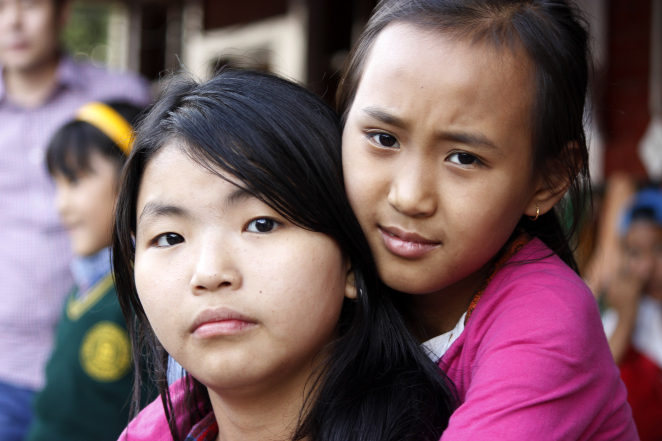
CHAPTER II: THE MEANING OF EDUCATION
2.1 Education is to be recognised as a human quality that enables understanding of external objects and phenomena, and that leads to the awakening, maturing and completion of the potential of the inner consciousness.
2.2 Education is not to be recognised as merely grasping what is heard from others. Instead, it is to be recognised as realisation of what is heard through the power of self-confirmation and actualisation of what is realised through persistent contemplation. It is, thus, a process of learning through hearing from others, self- investigation and persistent contemplation.
2.3 Education is to be recognised as a unique inner quality in which the discriminative wisdom and mind-pacifying techniques are conjoined into close partnership.
2.4 Education is to be recognised as a key inner technology that transforms social and personal actions into wholesome deeds.
2.5 Education is not to be recognised merely as a means of livelihood. Instead it is to be recognised as a means of achieving temporary as well as long-term welfare for the self and others. In particular, it is to be recognised as a vehicle of social welfare and service.
2.6 Education is about recognising the undesired suffering and abandoning its cause; and recognising the desired happiness and engaging in practice of its cause. It is, thus, to be recognised as a means towards engaging in desirable actions and avoiding undesirable actions.
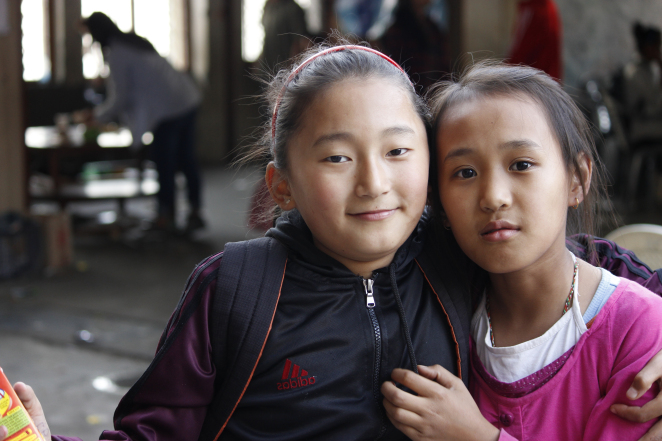
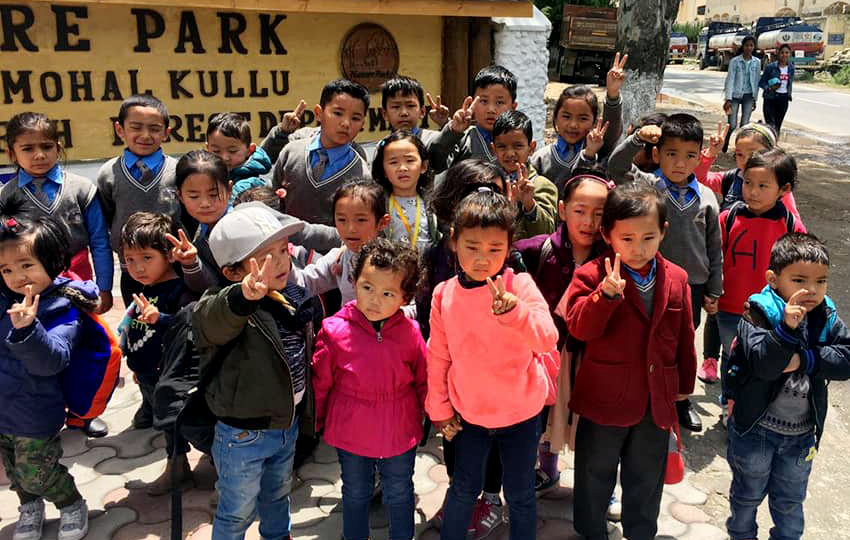
CHAPTER III: THE PURPOSE OF EDUCATION
A The Purpose of Education in General
3.1 The general purpose of education is to awaken and develop the human qualities of wisdom, loving kindness and compassion; their dependent virtues of right view and conduct; and the art of creativity and innovation.
3.2 To refine human perceptions and sensitivities and to initiate independent and valid investigation into phenomenal and ethical spheres, thus enabling the accomplishment of personal, national and universal goals;
3.3 To empower people and nation to become self-reliant, i.e. without the need to depend on the assistance and support of others; and to generate patriotic and dedicated persons and other resources for achieving the cherished goals of the society and nation.
B Education for Tibetan People in Particular
3.4 A responsibility the Tibetan people have towards the world community is to preserve and promote the unique wealth of Tibetan culture and traditions, which are of great value to the whole of humanity, through all times and circumstances.
Another responsibility the Tibetan people have to the world is to promote and widely propagate the noble principle of Universal Responsibility as introduced and initiated by His Holiness the XIV Dalai Lama. These responsibilities are to be fulfilled.
3.5 The ultimate goal of the Tibetan people is to transform the whole of the three Cholkhas of Tibet into a zone of non-violence (ahimsa) and peace; to transform Tibetan society into a non-violent society; and to lead other peoples onto the path of 3 non-violence and compassion. Thus, the Tibetan people must be made capable of correctly and fully understanding the direction, path and means to this goal.
3.6 Tibet is situated on the roof of the world and her wealth of natural resources has a close bearing on the well-being of all Asian nations and the world at large. Thus, it is of paramount importance that the Tibetan people should be able to preserve the natural environment of Tibet.
3.7 A political goal of the Tibetan people is to instill in all Tibetan races of the three Cholkhas the principles of unity, freedom, democracy, rule of law, non-violence, truth and justice. It must be ensured that all Tibetans irrespective of their age properly understand and live by these principles.
3.8 The Tibetan system of economy must also be in accordance with the aforesaid fundamental principles. The Tibetan people must therefore avoid: the two widespread extremes of capitalism and socialism; the two livelihood extremes of luxuriance and destitution; and reliance on wrong means of livelihood1. A system ensuring self-sufficiency and right means of livelihood must therefore be followed.
____________________
1 Earning living through means not in accordance with ethical and spiritual principles
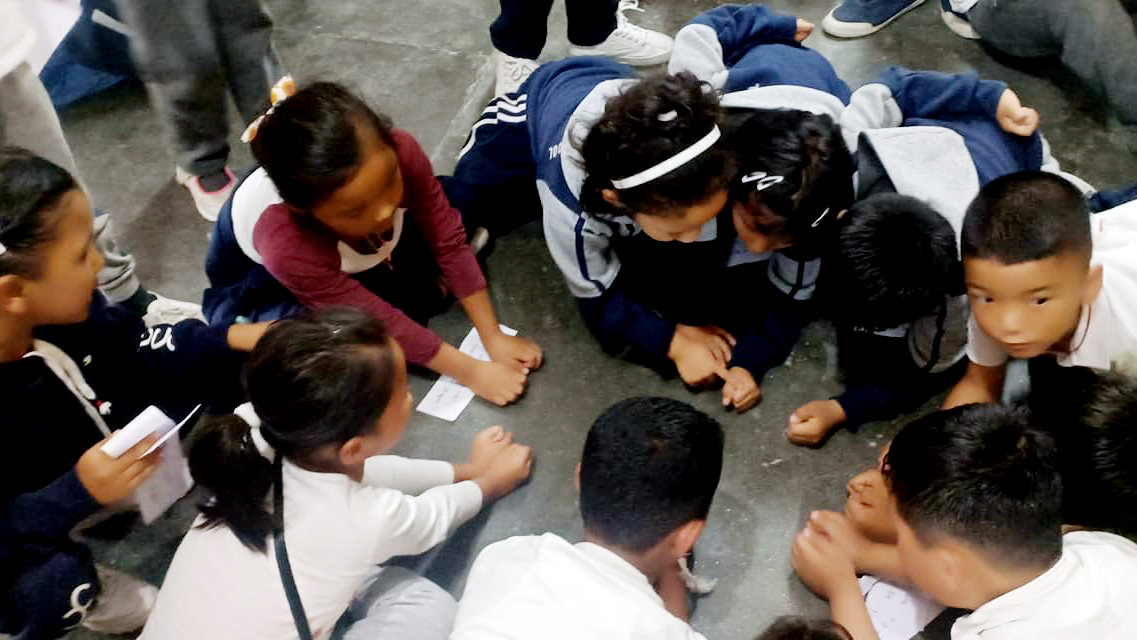
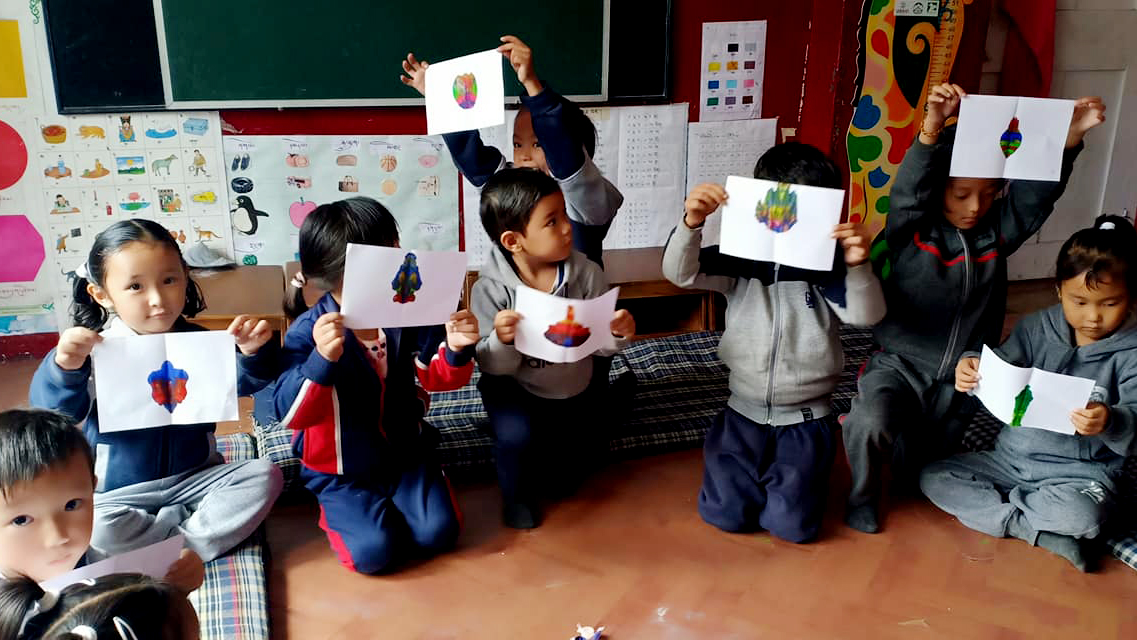
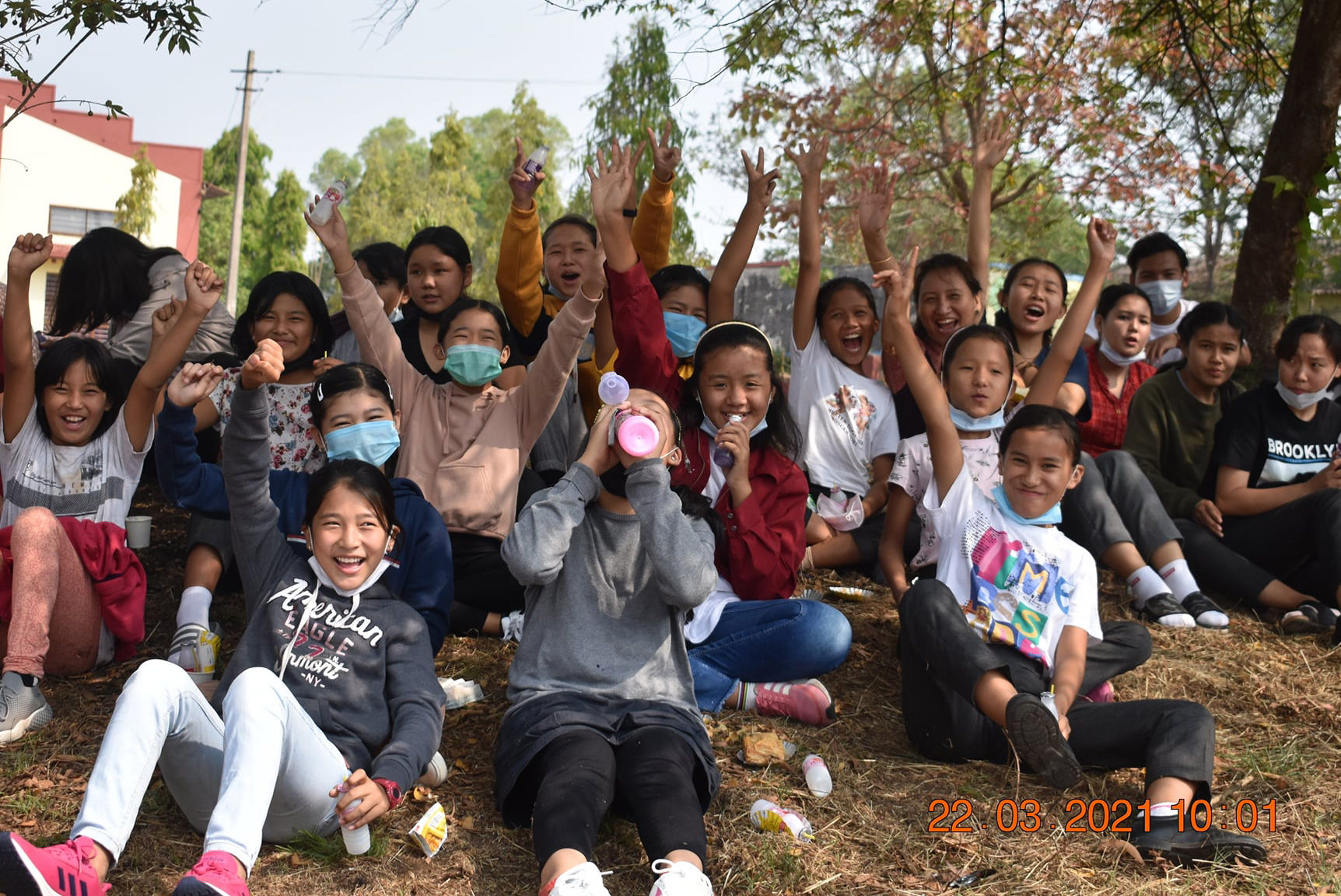
CHAPTER IV: SOURCES OF LEARNING
A Traditional1 Tibetan Education
4.1 The principal sources of the traditional Tibetan education are the traditions of Yungdrung Bon2 and Buddhadharma3. Hence, base, path and result, and view, practice and discipline of the inner science contained in these traditions form the core of Tibetan traditional education.
4.2 The four other Tibetan sciences of Language, Valid Cognition4, Art and Medicine together with their branches, which have been highly influenced by Bon and Dharma, are also subjects of traditional Tibetan learning.
4.3 The Tibetan Language, which is the medium of these traditional long period of development has undergone very few changes. It to communicate intended meaning. It is a great store-house of sciences and arts difficult to be found in other languages. It is, in standard base of all Tibetan studies.
B Modern Education
4.4 Modern Education, unlike traditional Tibetan education, does not trace its origin to a religious or ancient cultural source. It, instead, is a system that was begun and developed in recent centuries by human beings through investigation and experimentation, primarily, on external objects and phenomena. It developed further and was spread more widely in the course of time.
4.5 Modern Education primarily includes the study of science and technology, mathematics, social sciences, economics, management and planning, and most arts subjects which fall under the category name of “science”.
____________________
1 “Tradition” must not be understood as any custom merely perpetuated for a long time. It instead must be understood as a continuum of wisdom or science: (i) originated from a valid source; (ii) passed down through an unbroken lineage; and (iii) supported by valid reasoning. Additionally, it must be an everlasting source of benefit and happiness independent of changes of time and circumstance.
2 The earliest native religion of Tibet founded by Shenrab Miwo of Shangshung, the western region of ancient Tibet; more popularly called simply ‘Bon’
3 The doctrine and teaching of the Buddha Shakyamuni (623 B.C.-544 B.C.)
4 Traditional science of logical reasoning origination form India
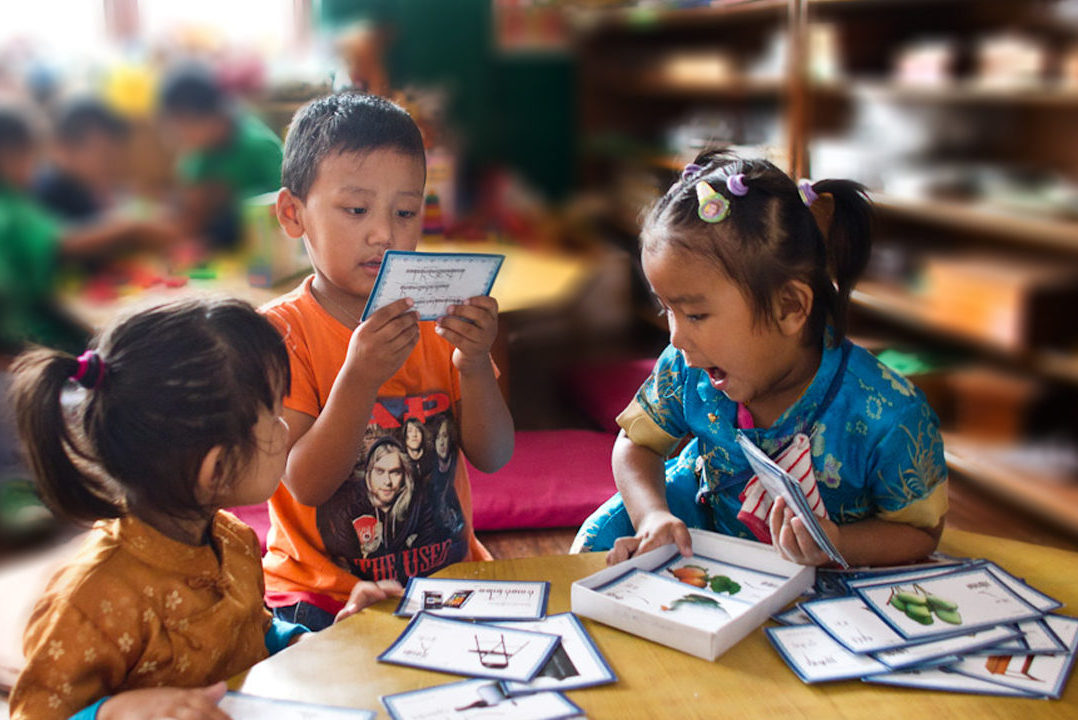
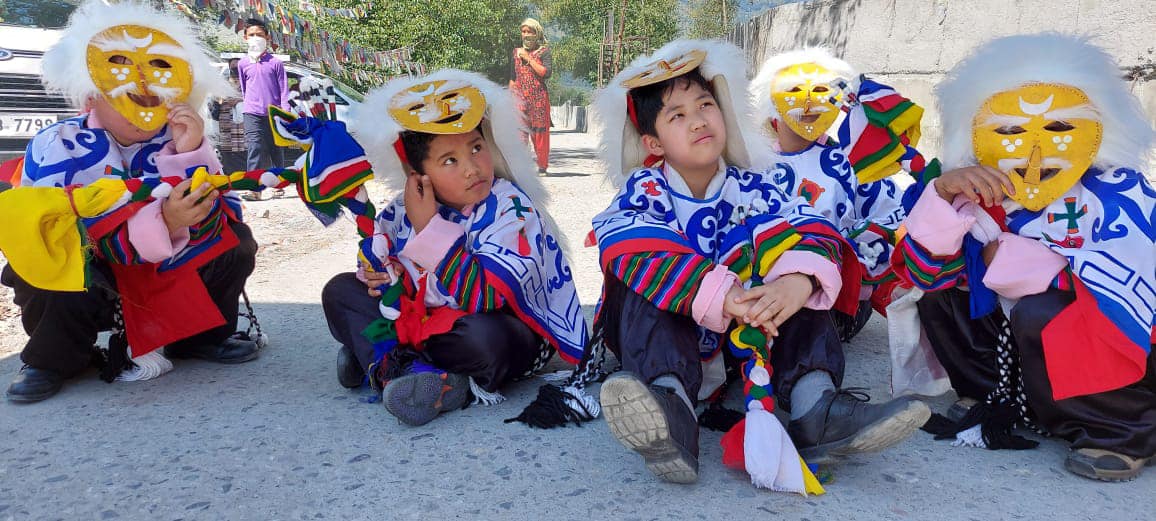
CHAPTER V: THE AIM OF GIVING EDUCATION
5.1 Students must be enabled to fully awaken their discriminative faculty of mind to be able to distinguish right from wrong. This would empower them: to be confident to make decision with freedom of thought and action; to be self-reliant in livelihood,
i.e. to live without depending on or exploiting others thereby ensuring their freedom of livelihood by right means; to be able to protect the freedom of the individual and community by non-violence thereby ensuring the freedom of security. This constitutes the principle of “freedom”.
5.2 By embracing other beings as more precious than the self and sacrificing the self for the service and welfare of other persons, the noble spirit of altruism is to be generated and established. This constitutes the principle of “altruism”.
5.3 For the sake of future generations, the environment and natural resources must be conserved for the peaceful sustenance of this planet, and people must be empowered to uphold their ancestral cultural heritage. This ability to preserve culture and environment constitutes the principle of “upholding the heritage”.
5.4 In relation to the general well-being of the world and in accordance with the needs of time and place, we must be able to introduce new principles, systems, objects, movements and so forth. This constitutes the principle of “innovation”.
Raising citizens to be endowed with these four stated qualities shall be the aim of giving education.
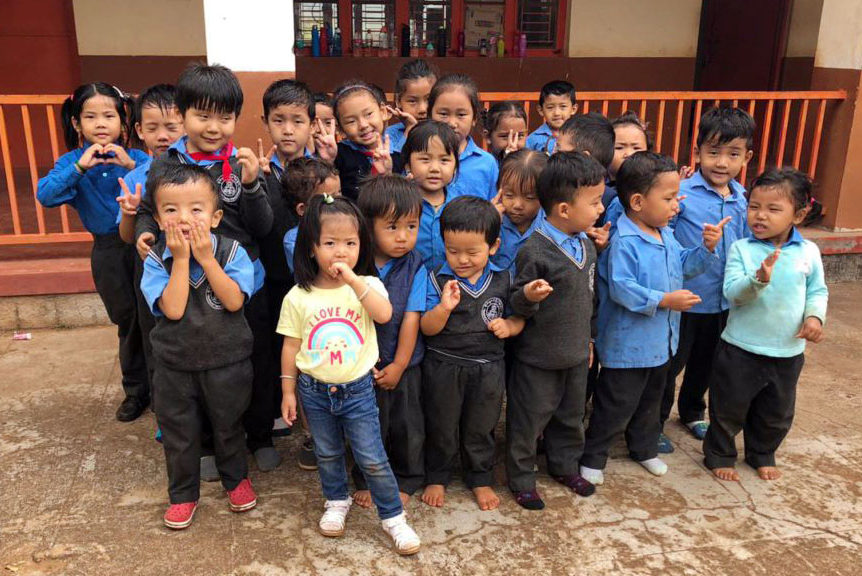
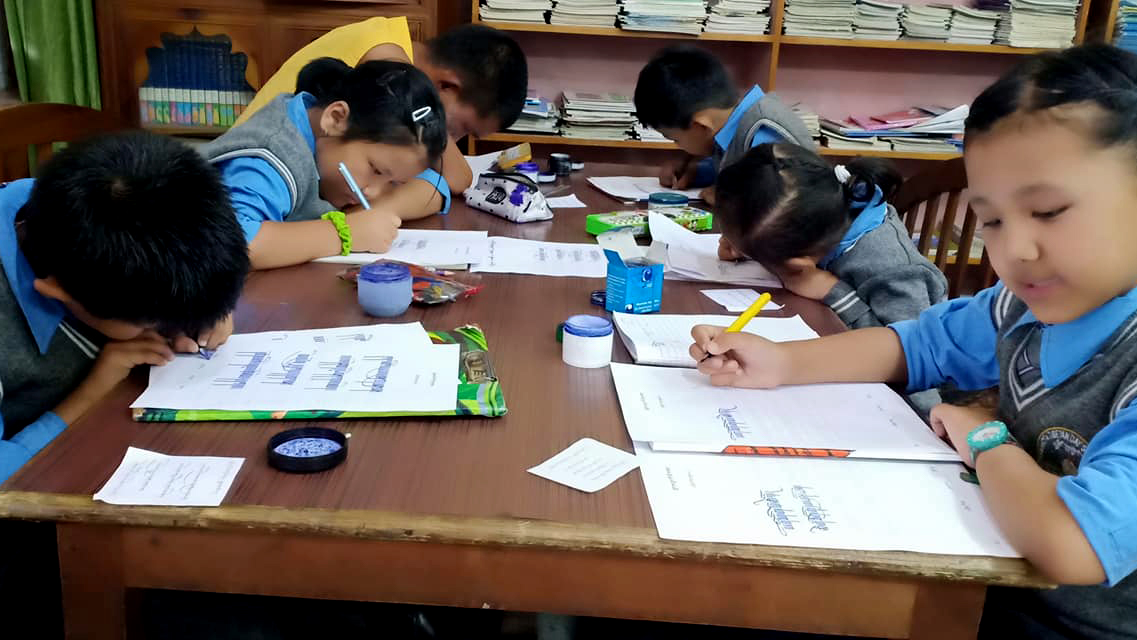
CHAPTER VI: SYSTEM OF EDUCATION
6.1 A system of education having traditional Tibetan education as its core and modern education as its essential co-partner shall be implemented.
6.2 As nothing is more important than the teacher in the work of imparting education, a teacher-centred education system shall be followed.
6.3 However, when teachers actually undertake the work of teaching, the student-centred methodology shall be followed.
6.4 In an education system having traditional education as its core, it is appropriate to have the medium in which the traditional learning abides as the medium of instruction for general education. Hence, efforts shall be made to gradually convert the medium of instruction in all Tibetan institutions of learning from the pre-primary level up to the highest research study level, into Tibetan language.
6.5 Inherent to traditional as well as modern learning, is the content meaning and the vehicle that conveys it. As proficiency in the vehicle of speech is gained with the study of language and proficiency in content meaning is gained with the study of Valid Cognition (pramana), the Tibetan language and Valid Cognition shall be taught with special emphasis at the basic school level.
6.6 In order to empower students to investigate and reflect on obscure phenomena and to develop confidence in presenting their findings after investigation before the world’s scholars, the process of learning by hearing and thinking as indicated by Tibetan Inner Science shall be widely introduced and promoted.
6.7 In order to instill into pupils the principles of wholesome thought and conduct from the pre-primary school level, the quality and role of teachers, formation of school curriculum, and methodology of teaching shall be framed mainly in accordance with the traditional Tibetan principles and sciences, rather than the modern system.
6.8 A standard system of education, in which school and university graduates can freely follow their family occupations or start a new occupation of their choice, shall be introduced. This will help prevent the situation of producing large flocks of unemployed graduates.
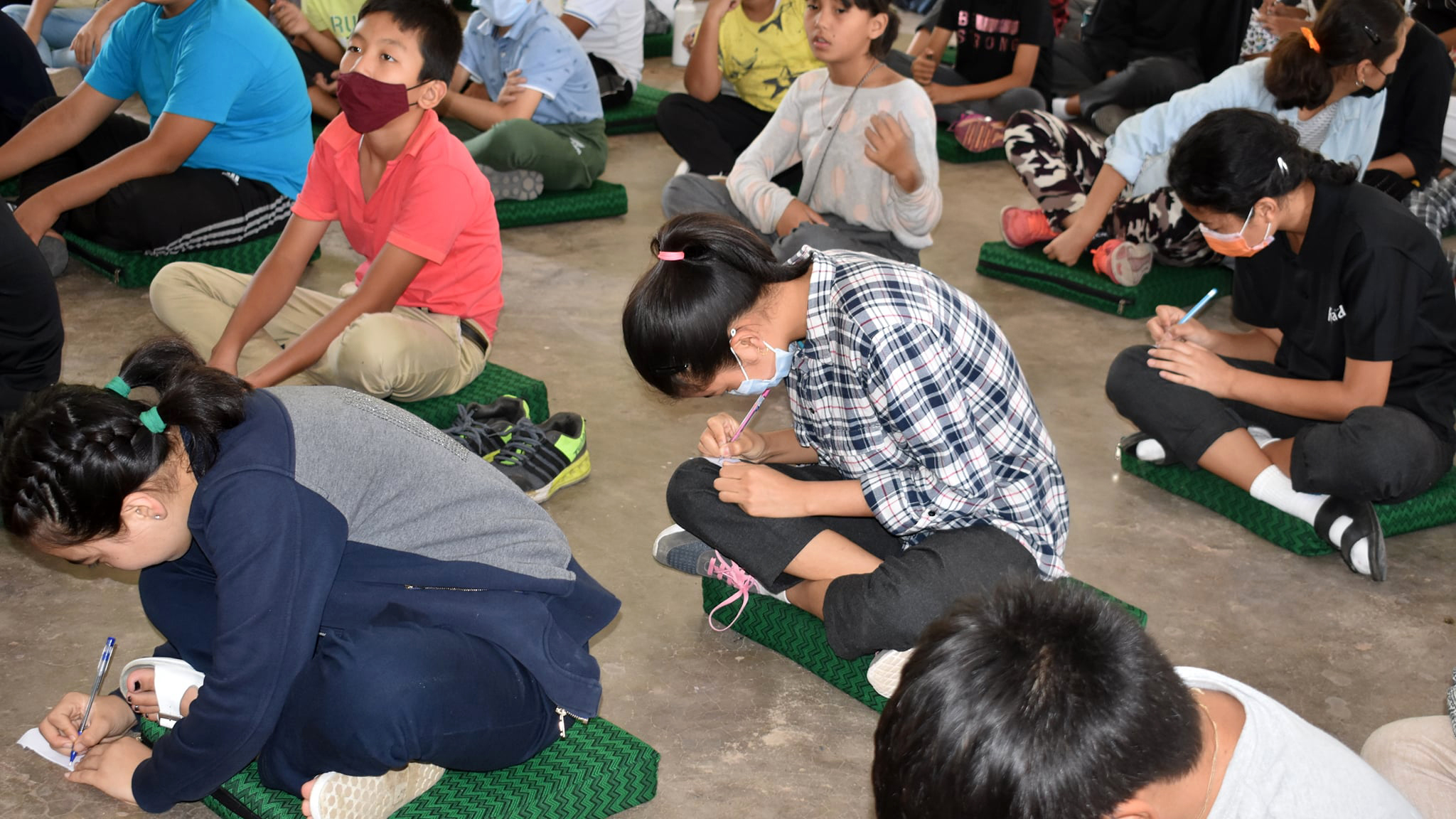
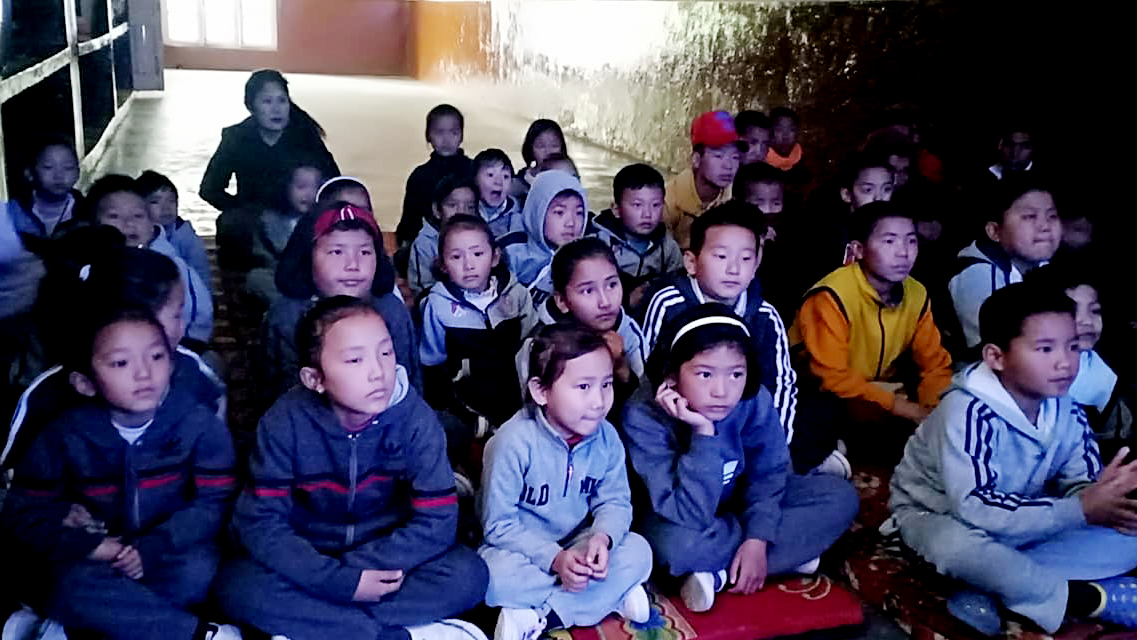
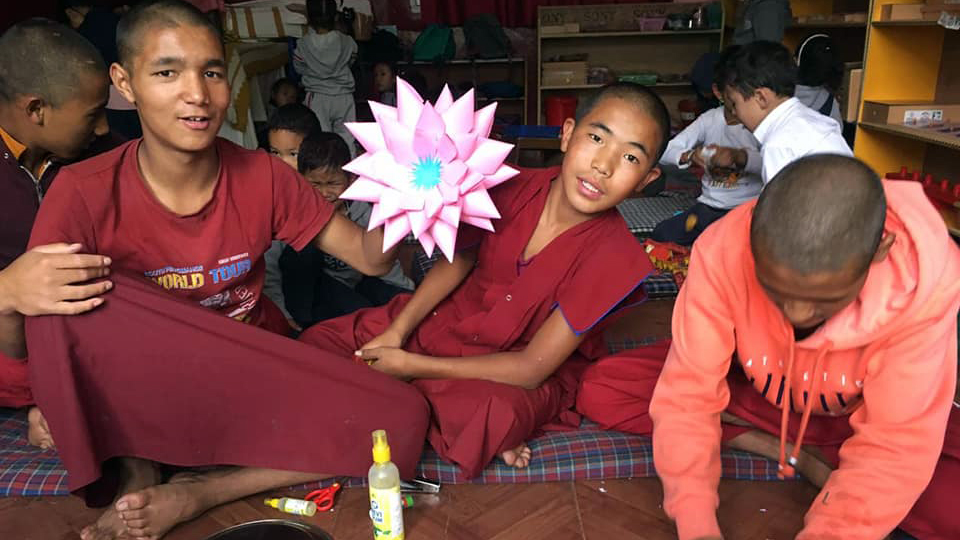
CHAPTER VII: THE STRUCTURE OF BASIC EDUCATION
7.1 Education is a life-long process to be pursued and practised by persons of all ages. Of the two systems of education: formal and non-formal, primary importance shall be given to the latter.
7.2 Nevertheless, since formal education has become important and necessary in the present day, the Administration shall frame a general structure covering all citizens as part of the education policy and issue directives accordingly.
7.3 The monastic centres and other institutions of traditional learning shall not come under the purview of the structure framed by the Administration. However, if such institutions and other societies or individuals establish schools for general basic education and desire recognition from the Tibetan Administration in exile, they must conform to the general structure.
7.4 The structure of the basic education shall comprise of a four-level school system: (1) three-year pre-primary school; (2) five-year primary school up to the fifth class; (3) three-year middle school up to the eighth class; and (4) four-year secondary school up to the twelfth class. Until a new system suitable for Tibetans is introduced for the three-year pre-primary level, the Montessori system shall be followed.
7.5 The pursuit of further secondary school education or vocational studies after graduating from Class X shall be decided by individual choice and prescribed academic requirements. Likewise, after graduating from Class XII, opportunities for the pursuit of vocational studies by choice shall be made available.
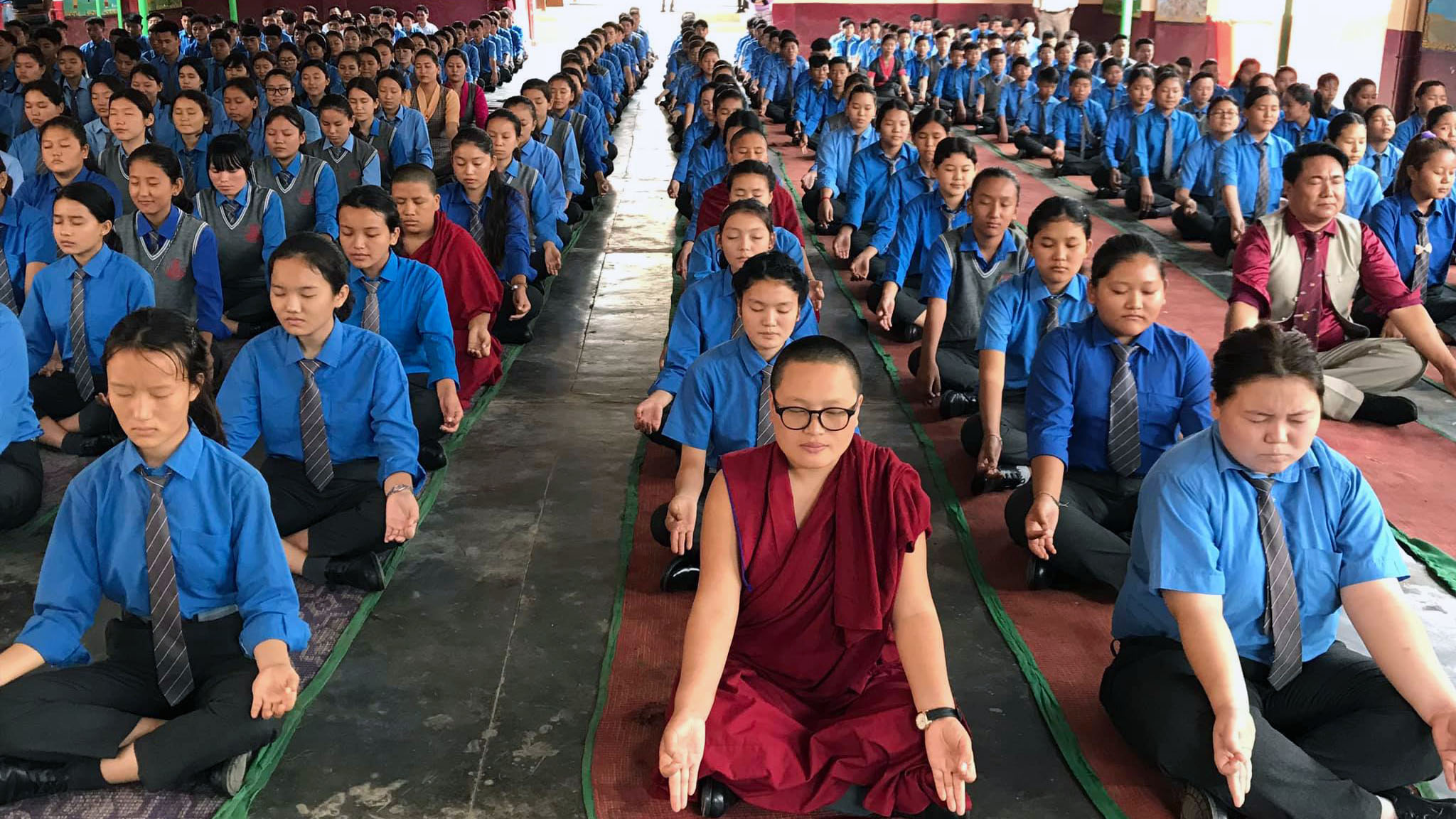
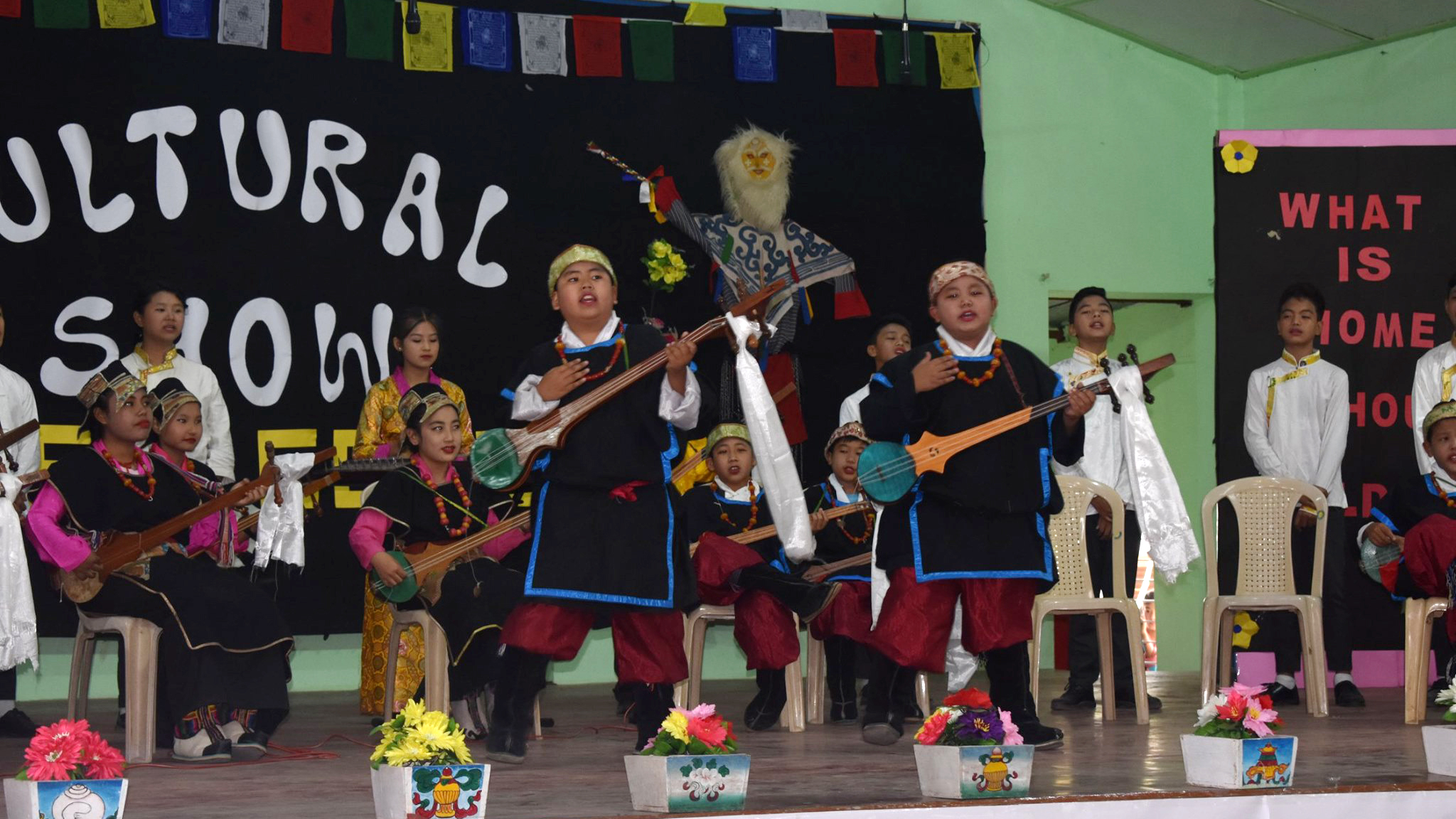
CHAPTER VIII: SUBJECTS OF STUDY
A. Tibetan Language
8.1 The studies of language and grammar being the basis of, and gateway to, any learning, the Tibetan language, grammar and literature shall be the main subject of study from the pre-primary level to Class XII.
B. Science of Valid Cognition
8.2 The ability to penetrate deeply into subjects and into the nature of phenomena through independent investigation and search, without blindly following the word of others, can be developed from the study of Science of Valid Cognition. The teaching of this subject up to Class XII with special stress shall therefore be recognised as one of the most important directives.
C. Other Languages & Valid Cognition Sciences
8.3 A three-language policy shall be adopted. Besides the primary mother-tongue language, a student should be fully proficient in any one foreign language and acquire a working knowledge of reading and writing in a third language after graduating from Class X. A second language may be chosen from among the four languages of Hindi, Chinese, English and Spanish. Depending on the availability of facilities more choices may be given. However, until such time when the medium of instruction is fully converted to the mother tongue, English will remain by necessity the second language. Hence the above stated choice of the second language cannot be implemented immediately, but such a long-term aim should be established now. The third language will be the language of the region where the school is located. If the regional language is Tibetan or the second language, any other essential language
may be chosen in their place.
8.4 From the pre-primary level and up to Class III, no other language besides Tibetan shall be taught. Even the teaching of terms in, and songs of, other language should be avoided. The teaching of second and third languages shall be started from Class IV and Class VI respectively.
8.5 Suitable introductory studies of: the modern sciences of logical reasoning; experimental methodology; tenets or theories of the social sciences; and the investigative methodologies used in the study of history shall be included within the curriculum of the middle school (Class VI – VIII).
D. Art & Crafts
8.6 The study of any sustainable art or craft of a non-violent and environmentally friendly nature shall be made compulsory at both the levels of middle school (Class VI to VIII) and secondary school (Class IX to XII). For this purpose, a variety of traditional art and crafts of Tibetan and Indian origin and, to a lesser extent, certain modern art and crafts – suitable to our situation and qualifying the above characteristics – shall be taught in the schools. Depending on the availability of facilities and the interest of students, the study of a suitable art or craft may be included within the curriculum of the primary school level also. Similarly, for development of special talents and skills in art and crafts, language and other studies, suitable subjects of study may also be included in the curriculum according to the interest and mental disposition of the students.
8.7 Several vocational schools shall be established for the admission of students who have graduated from Class X and Class XII. Besides the main training courses of Tibetan art and crafts, and various modern art and crafts, the Tibetan language and another additional language shall also be taught in these schools up to an appropriate level.
E. Science & Humanities
8.8 The introduction of general science; social sciences; history; sciences of mind; and other subjects of science and arts that are necessary shall be included in the study curriculum of the middle school (Class VI to VIII) for a length of time, and up to a level suitable for this stage.
F. Mathematics
8.9 Since study of mathematics is both useful in general life and essential for the study of science, adequate study of modern mathematics and an elementary introduction to traditional Tibetan mathematics shall be included in the school curriculum.
G. Principles of Non-Violence and Democracy
8.10 The study of the value, teachings, practices and histories of the principles of nonviolence and democracy shall be suitably included within the study curricula of all three levels of school – primary, middle and secondary – in accordance with the degree of understanding of students at those levels.
H. Moral Conduct
8.11 Morality is not to be taught as a separate subject. Instead it is of vital importance to closely connect it to the central theme of all educational activities and especially all subjects of study to be taught in the classroom. However, excerpts from religious sources on morality; stories and tales on spiritual themes; traditional writings on social or secular ethics; and biographies of ancient and contemporary great personalities should be included within the content of school textbooks or supplementary reading.
I. Physical Exercise & Sports
8.12 Since school students are undergoing both physical and mental growth, it is important to dedicate equal attention and time to their health, hygiene and physical training and to their academic curriculum. Training in various forms of Tibetan traditional physical exercise; physical training of yoga; breathing exercises of pranayama and so forth should be given. Additionally, natural health treatments such as baths, massage, lotion application and so forth should be introduced from the primary school level. Similarly, manual work and walking being principal modes of physical exercise, a definite period of time should be allotted for them within the regular timetable. For diversion and recreation of students, games and sports shall also be included in the curriculum. Whilst attaching more importance to the traditional Tibetan games and sports, training in contemporary games and sports shall also be given.
J. Subjects of Study for Secondary School
8.13 In the common four-year study curriculum, it is necessary for the time being to retain all subjects of study prescribed for Class X and Class XII Examinations of the host country. Even after division of classes into science and other streams, Tibetan language and Science of Valid Cognition must continue to be included in the curriculum as compulsory subjects for all streams and classes of this level.

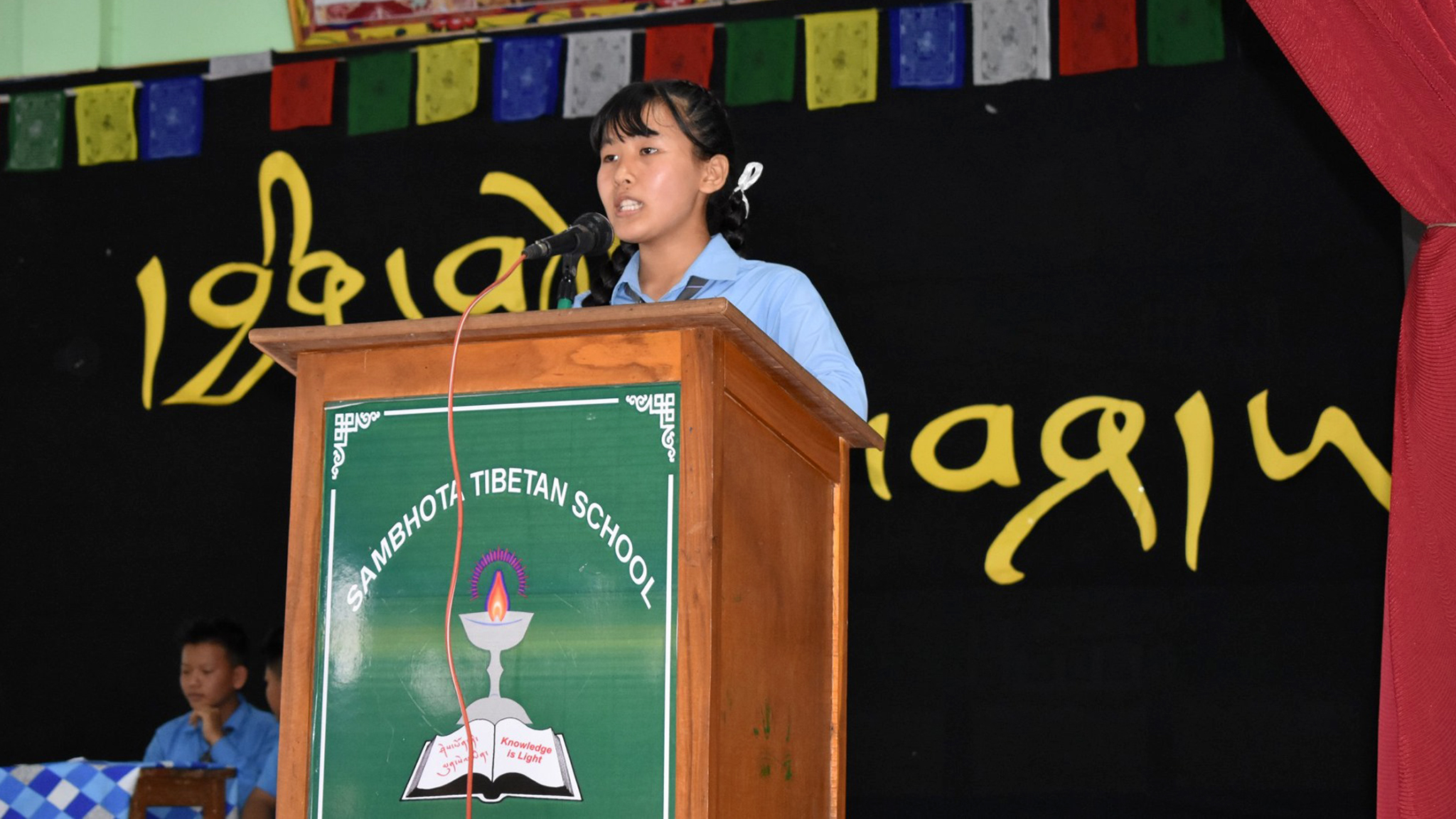
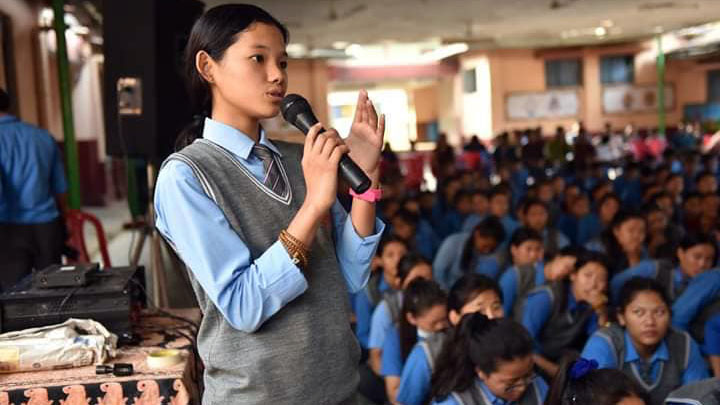
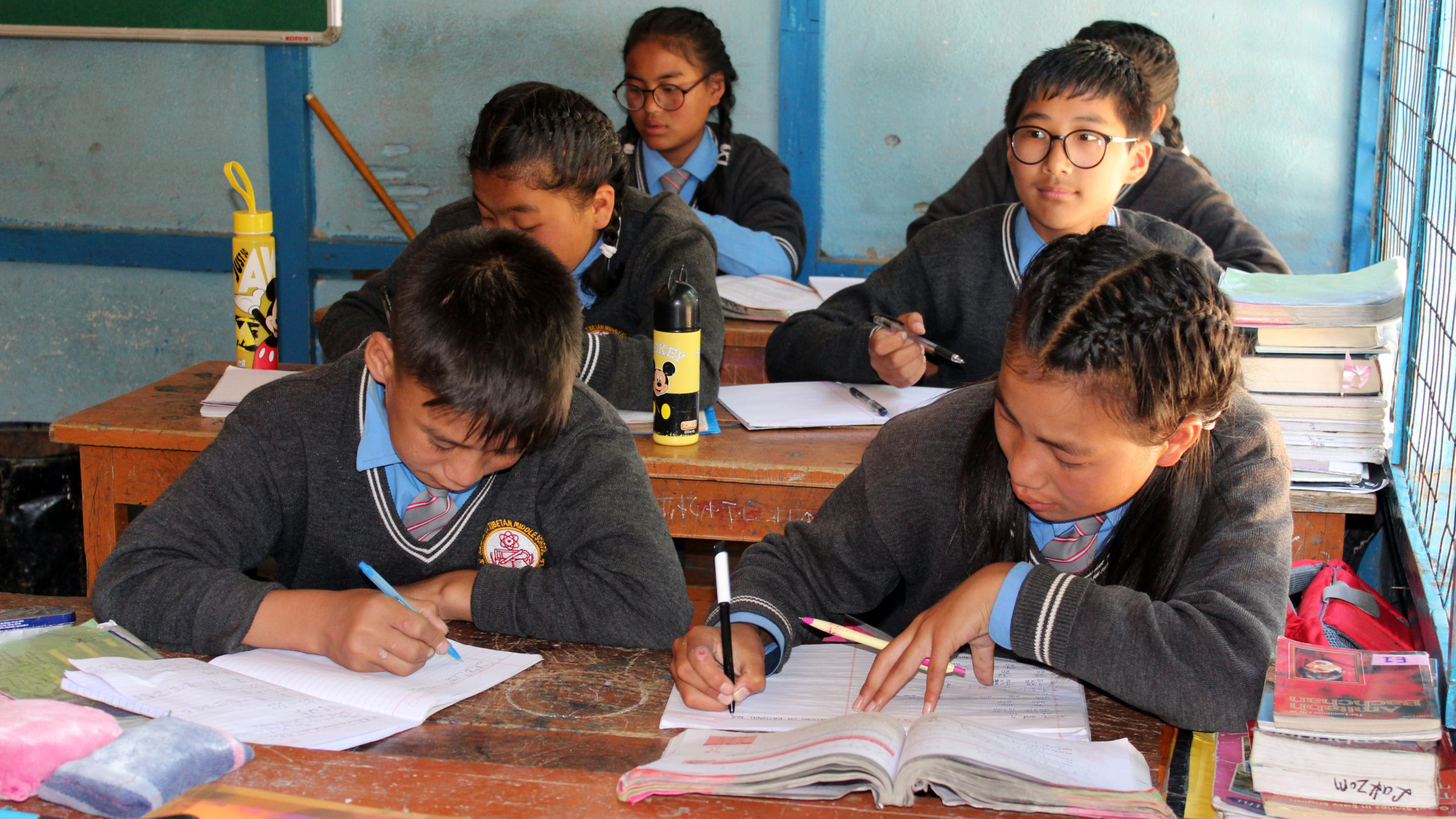
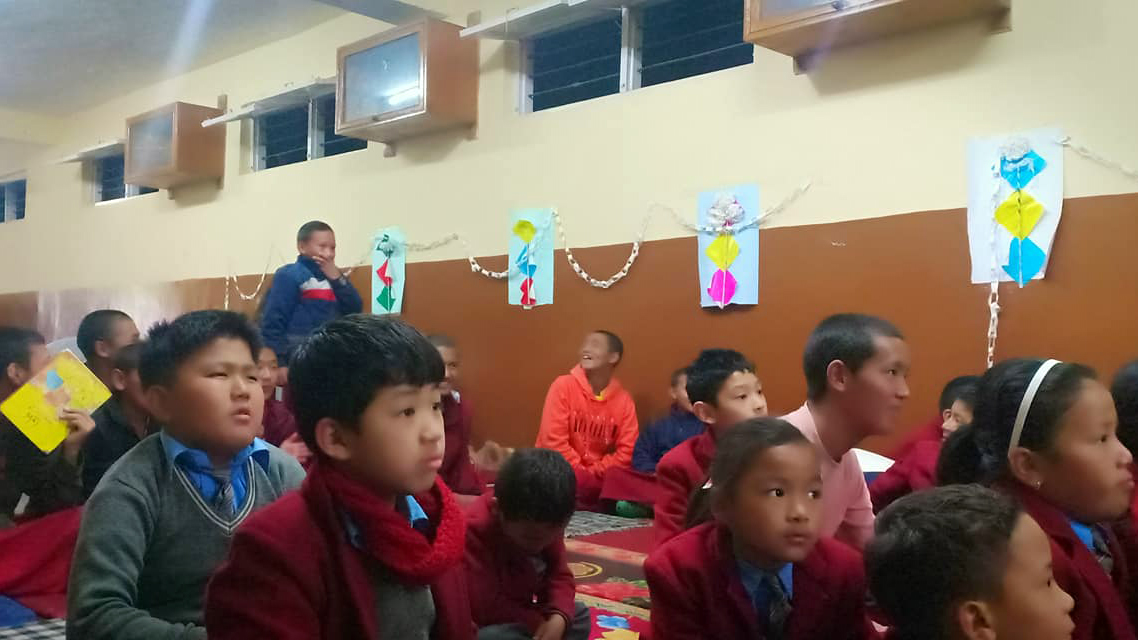
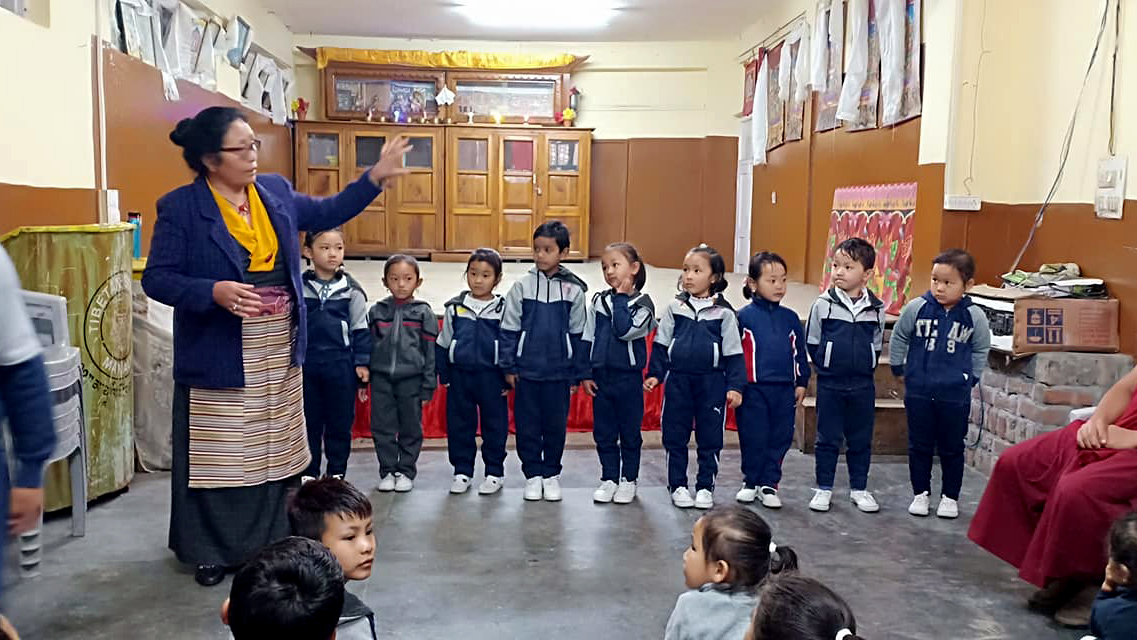
CHAPTER IX: SYLLABI & DURATION
9.1 Curricula and syllabi for all classes up to Class XII shall be prepared in the order and inter-related manner as required by the Basic Education Policy. For that purpose a special committee shall be established to prepare the Common School Curricula and Syllabi.
MAIN MENU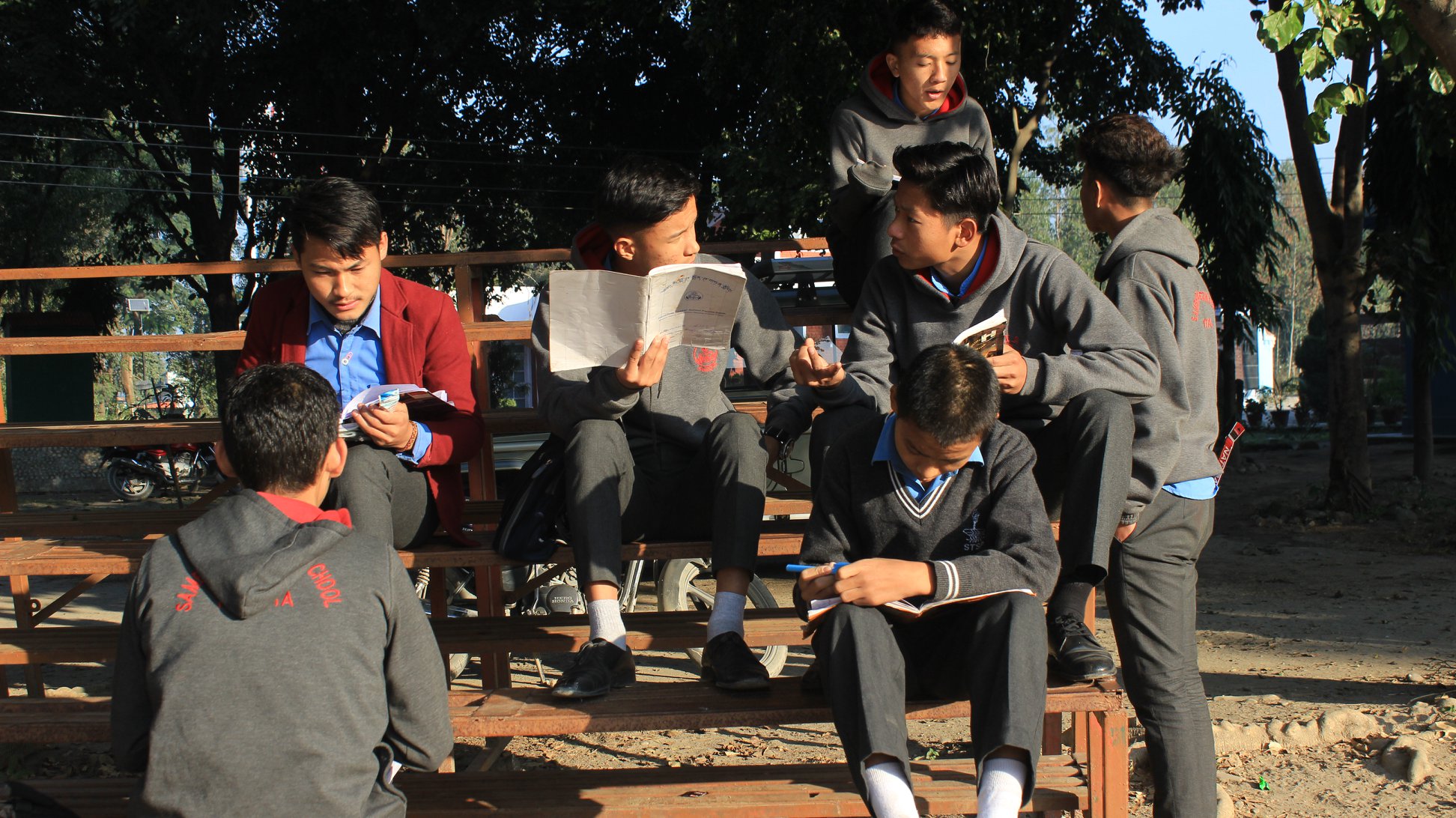
CHAPTER X: EXAMINATIONS
10.1 The present system of evaluation by means of a two or three hour examination shall be discarded. Promotion of students to the next class, up to Class VIII, shall be done, not on the basis of the present system of examination, but rather on the basis of the collective decision of concerned teachers through an overall assessment of student’s regular conduct, level of understanding, practical skill and classroom participation. However, for the time being and until further review, the system of written examinations may continue with a 50 percent share of the overall evaluation. A new system of evaluation shall also be introduced to estimate the standard of learning for the classes of the secondary school, with the exception of those who are required to sit Board Examinations of the host country.
MAIN MENU
CHAPTER XI: TEACHERS
11.1 The future of any society rests on the quality of education provided, and the quality of education in turn depends on the quality of the teachers. Thus, teachers being the most important persons in society, great effort shall be made to recruit persons of highest character and learning to the profession. Legal provisions shall be put in place to ensure that due recognition and commensurate benefits are given to teachers.
11.2 Within the public service cadres, a separate cadre for persons in educational service shall be created. Rank and honour of this service division shall be superior to those of all other public service divisions.
11.3 Teachers should possess the general qualities of knowledge and experience as indicated by the contemporary educational system and inner qualities such as motivation and moral attitude as indicated by the traditional Tibetan sources. New schemes shall be devised and established to cultivate as many qualified teachers as possible on a regular basis.
11.4 Teachers must follow a life-long learning career and remain fully committed to the teaching profession. Resources towards the fulfillment of these conditions shall be provided.
11.5 All teachers employed at pre-primary to secondary school levels must have successfully undergone teacher training courses. The training should not only be on contemporary subjects and teaching methodology but also contain instructions on the qualities and characteristics that behoove a teacher and methods of cultivation of pupils as given in the traditional sources. History of traditional Tibetan education shall also be included in the training course.
11.6 In order to train teachers in contemporary as well as traditional teaching courses, a scheme for training Tibetan teachers shall be implemented.
11.7 Clinical teaching practice for trainees for a definite period of time at any college or other teaching institution shall be recognised as a vital and important part of the training course.
11.8 In order to maintain proper scrutiny over the quality of teachers, it shall be made mandatory for both qualified teacher-candidates and currently employed teachers to receive a five-year teaching license from the Tibetan Council of Education. This license must be renewed every five years. During that period, it shall be required for teachers to complete a certain number of in-service training courses enhancing professional development as a pre-requisite for renewal of the teaching license.
11.9 Comprehensive rules and regulations governing recruitment, salary and benefits, promotion and transfer, regular and additional duties, code of conduct, welfare and accountability shall be framed.
11.10 Teachers being leaders of people and nation building, adequate facilities and an environment conducive to their unobstructed development in freedom of thought, power of intellect and spirit of innovation, must be provided.
11.11 Teachers are to be role models in character for students and should be able to instill wholesome qualities into their students. For this reason, policy shall be framed against the recruitment of persons with low moral character as teachers, even if they possess high academic qualifications.
11.12 Based on the importance and need of pre-primary learning, a Class XII graduate with requisite training shall be appointed as assistant teacher for each of the pre-primary classes. Priority shall be given to female candidates for the posts of pre-primary teacher and assistant. The pre-primary and primary teachers should possess the minimum qualification of a Bachelor Degree and must have completed a teacher education course. Their salary and benefits shall be same as those of teachers of the secondary school level.
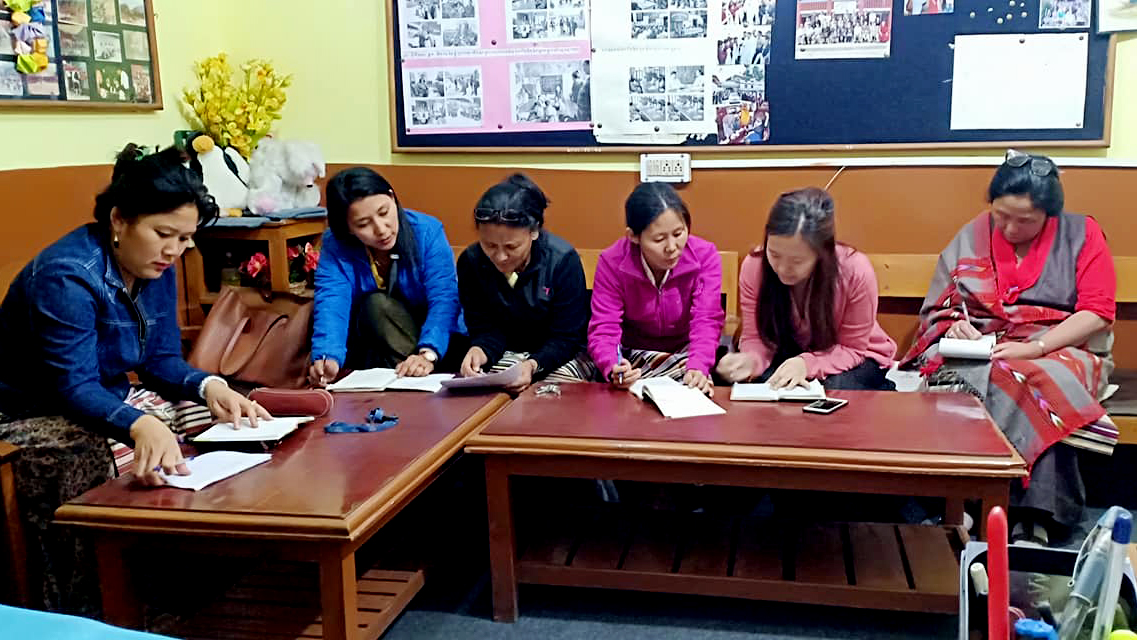

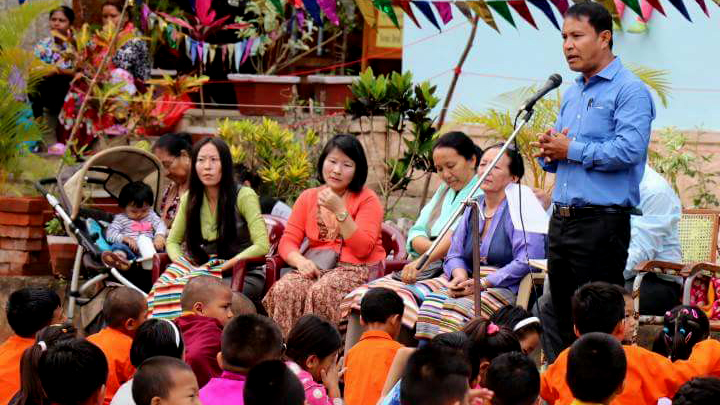
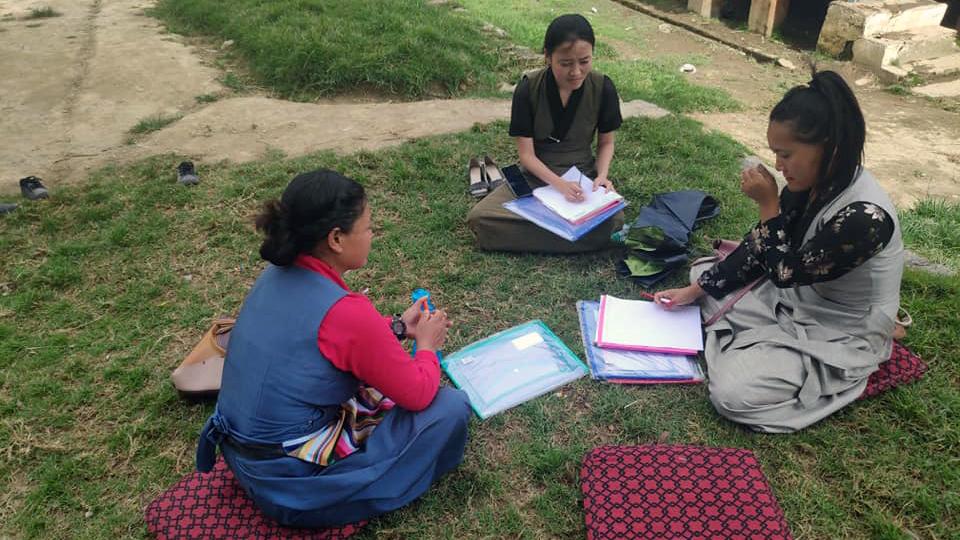
CHAPTER XII: ADMINISTRATION
12.1 All Tibetan schools in exile are required to uniformly implement the policies and directive guidelines on policies as and when framed by the Tibetan Administration in exile with respect to aims and objectives, structure, curriculum, evaluation, teacher and management of education.
12.2 The Department of Education, CTA is the highest central administrative authority in the affairs of education of Tibetans in exile. It shall implement the education policies as and when framed by the Central Tibetan Administration either directly, or principally through the medium of autonomous organisations.
12.3 It is emphasised that the internal management of schools shall be done principally by the local organisations and that the schools do not depend or rely on the Central Administration or their own central organisations in that matter.
12.4 To advise the Tibetan administration in exile on education policy; to monitor implementation of the education policy; to grant recognition and approval to rules and regulations, curriculum, textbook composition and examination system of all Tibetan schools in exile after necessary inspection; to grant recognition to all schools including pre-primary schools after necessary inspection; to issue and renew teaching licenses; and to monitor and oversee educational affairs as a whole, a permanent body ‘The Education Council of Tibetans in Exile’ shall be established.
12.5 For the construction of plans on teacher education system; school curriculum and text books; teaching methodology; and other teaching resources, committees and task forces of scholars and experts shall be established and appointed as necessary from time to time.
12.6 Autonomous and private schools may seek and receive recognition for their schools from the Central Tibetan Administration. The Department of Education shall lay down provisions and frame regulations for granting recognition to such schools.
12.7 All schools recognised by the Central Tibetan Administration shall abide by the provisions of structure and mandatory curriculum as framed by this policy. However, the autonomous and private schools may decide independently as to how the details of the policy are implemented.
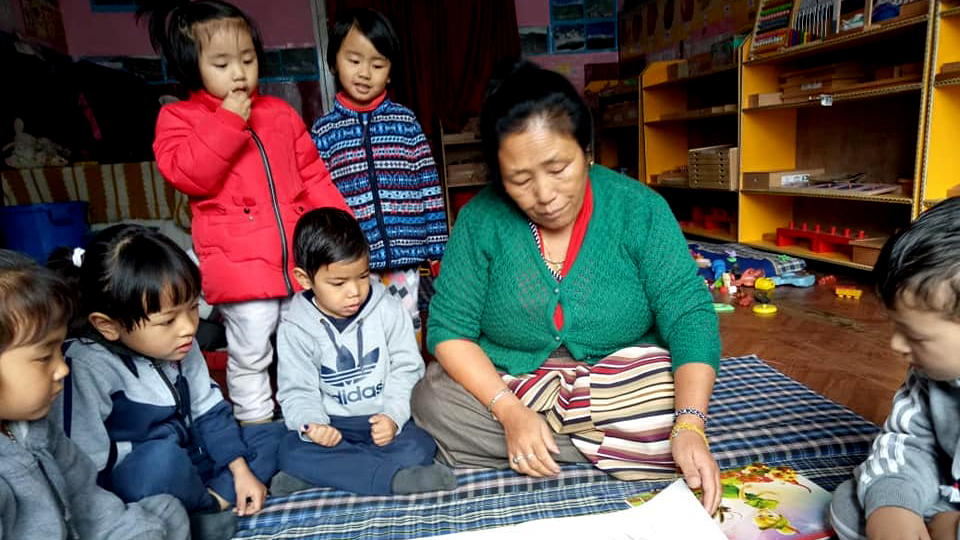
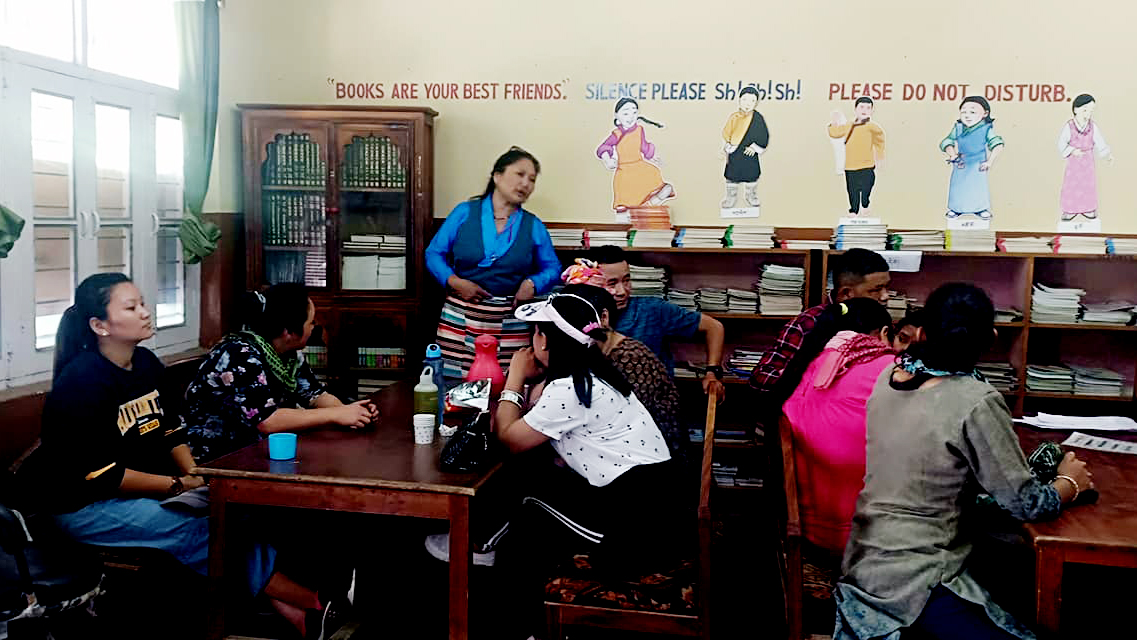
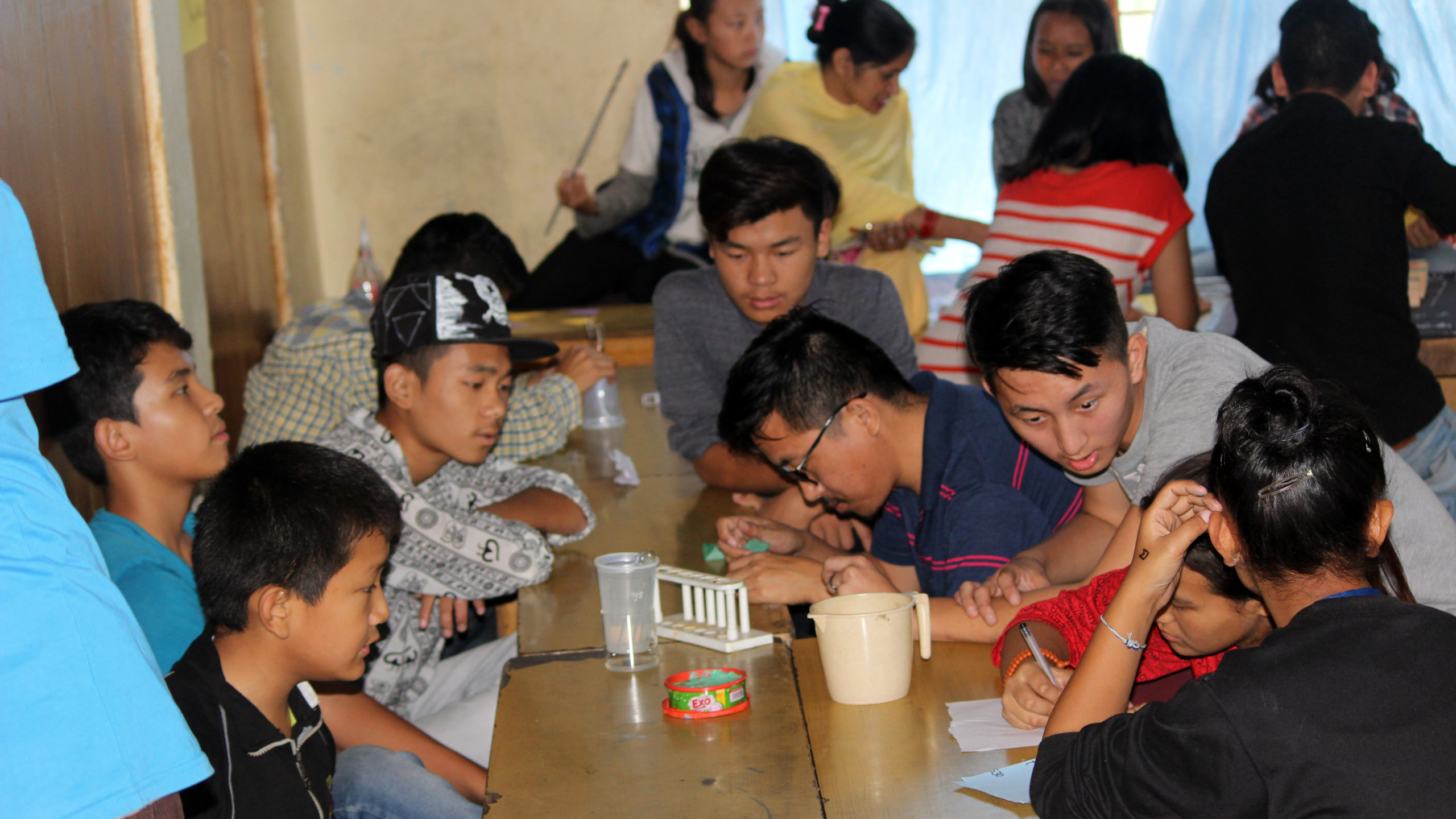
CHAPTER XIII: RIGHT TO EDUCATION
A. Basic Education
13.1 All Tibetan citizens performing citizen’s duties shall have the right to basic education up to Class XII free of tuition fee and without any discrimination on the basis of sex, race, religion, place of origin, being rich or poor, being ordained or lay.
13.2 No Tibetan parent shall have the power to prevent a child between the ages of 6 and 16 years of age from attending school. In order to maintain good relationship between parents and children, special emphasis shall be laid on children staying with their parents and on not admitting young children to boarding schools.
13.3 In order to facilitate the completion of studies up to Class X by all children, opportunity for re-admission to school shall be given to the students who were obliged to leave their schools before finishing Class X.
13.4 Only those Class X graduates with promising academic records – to be determined by a thorough assessment of teacher’s evaluation report, examination results and interest and intelligence of individual students – shall be admitted to the secondary school
education.
13.5 The remaining Class X graduates may be allowed to pursue vocational training courses for two years according to their wish. All Class X graduates shall have right to follow these training courses.
B. Education through Self-Learning
13.6 Students who have failed admission to the secondary school after Class X can however continue the secondary school studies through self-learning during or after their vocational training. Necessary provisions for such modes of learning shall be made.
C. Students with Special Needs
13.7 Best efforts shall be made to educate students with special needs in regular schools together with other students. All schools must therefore make provision for all necessary facilities to meet the needs of such students. Teachers must also be provided with standard in-service training both physically and mentally for education of students with special needs.
13.8 One or two special schools with complete facilities shall be separately established for the students who cannot be admitted in regular schools due to serious physical and/or mental disabilities. These schools shall be equipped with teachers and staffs who are
fully trained in special education. Provisions shall be made for students in these separately established schools to maintain close contact with their family and community.
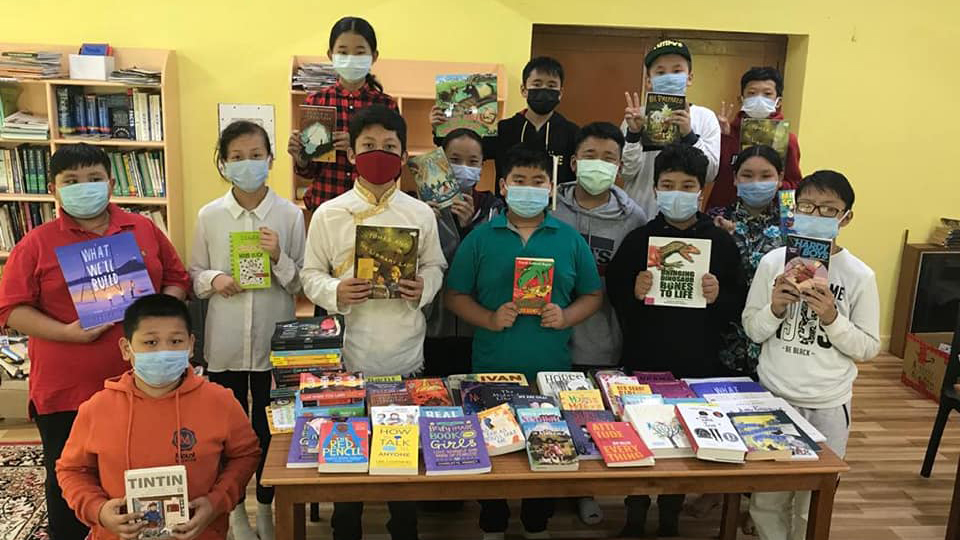
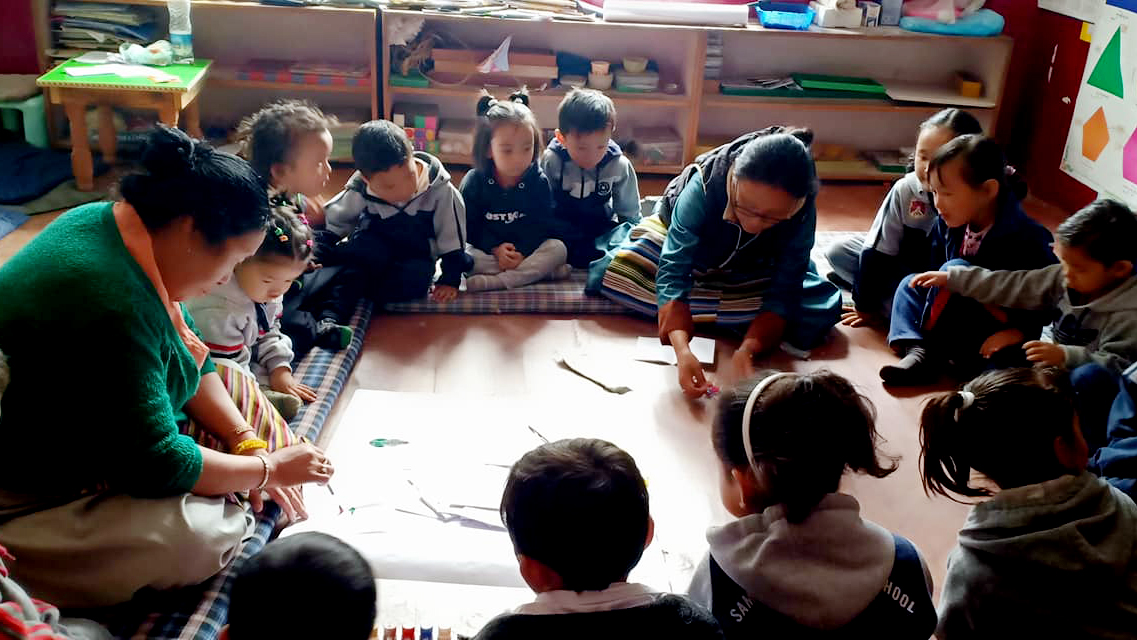
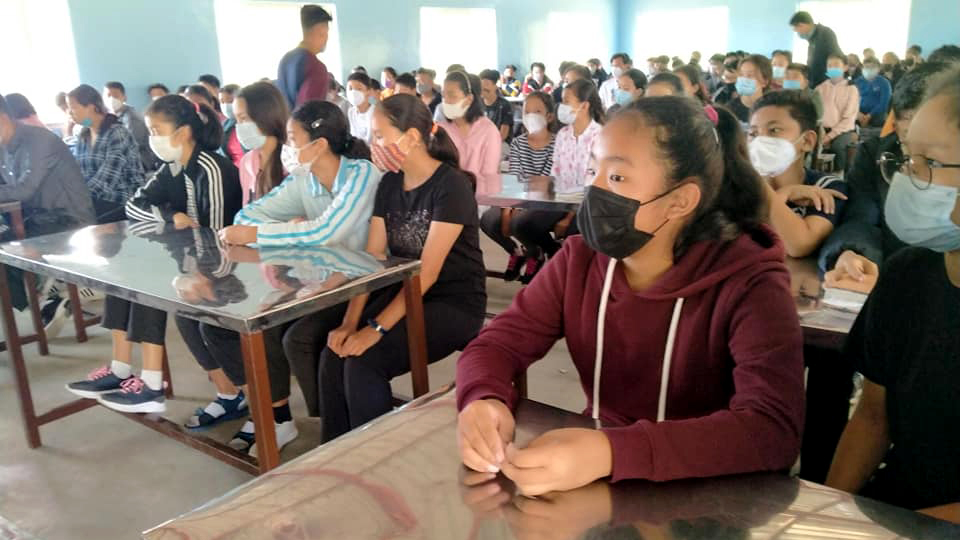
CHAPTER XIV: INTERIM PROVISION
14.1 It is difficult to immediately accomplish the provision of all teaching and nonteaching personnel as required by the new policy. For this reason, there is no doubt that the complete implementation of the above stated policies will take a considerable period of time. Therefore, to the end of achieving the ultimate aims of these policies in a gradual manner, a definite action plan shall be drawn after adoption of this policy in order to effect organised and gradual changes in the existing system and to implement the new policy.
14.2 To serve as model and for gathering experience, one or two new schools shall be opened as soon as possible wherein the provisions of the new education policy shall be fully implemented.
14.3 A committee shall be established for the functions of: selection of teacher candidates; conception of training schemes for such candidates; prescription of curricula and text books; and the drawing up of other academic plans. The above work plans (mentioned in this chapter) shall be started within the calendar year of 2005.
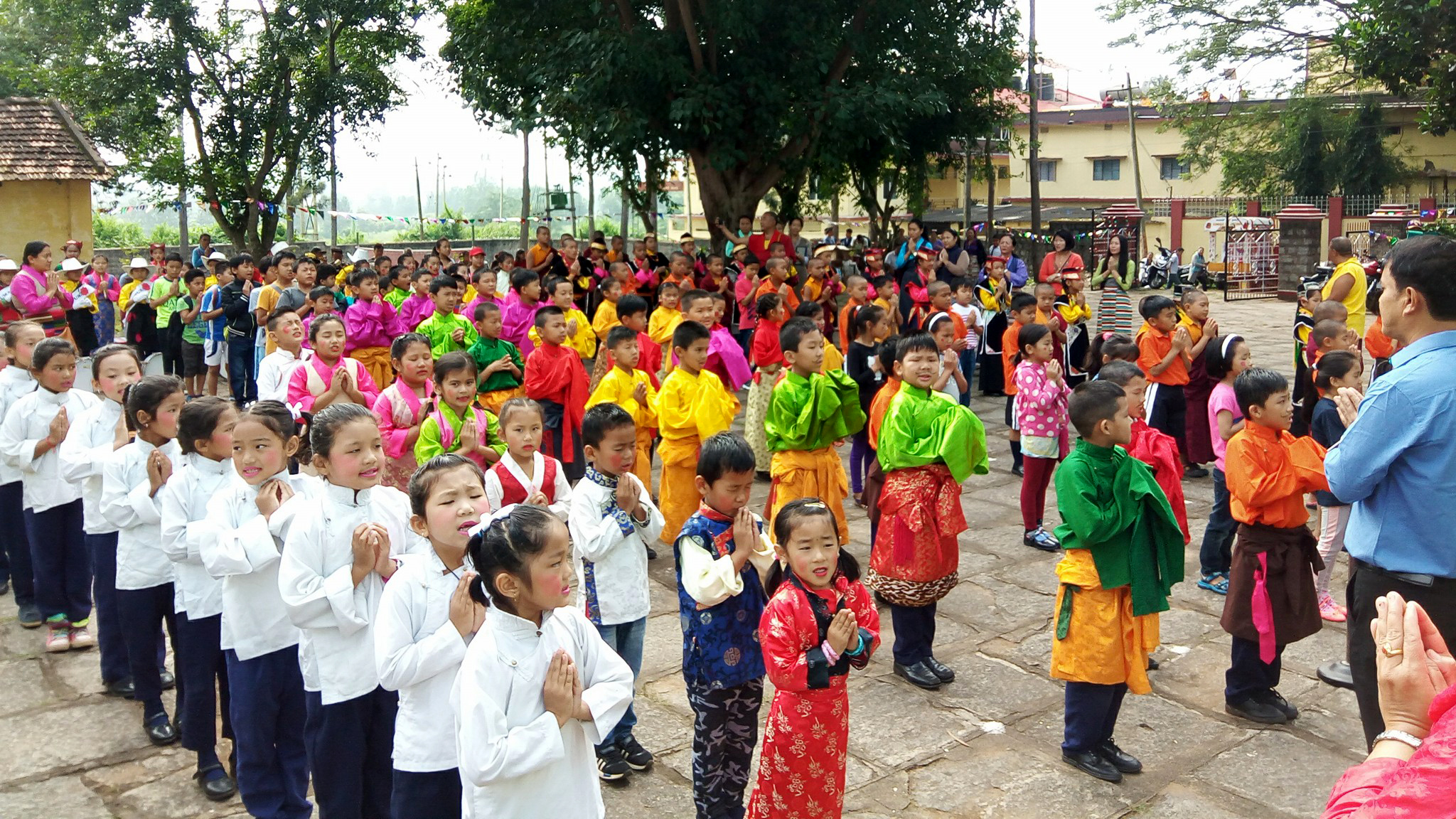
CHAPTER XV: REVIEW
15.1 A committee of scholars and experts, to be appointed by the Department of Education, shall periodically review and revaluate the plan of action for implementing the policy.
15.2 Articles of this policy may be reviewed whenever necessary.

NOTE:
This document has been originally prepared in the Tibetan language using several technical terms and styles of traditional composition. Great effort has been made in this translation to communicate the full and correct content-meaning of the original document. However, in the event of any doubt or difference in interpretation, the Tibetan version of interpretation shall be regarded final.
